fALL AUTUMN
50 Ideas for Your Fall Outdoor Bucket List

Here are 50 ideas for your fall bucket list. When it comes to seasons, fall seems to get the short end of the stick. After all, it arrives on the heels of our beloved summer, which never seems to last long enough.
But around here, fall is full of its own treasures. Pumpkin patches, apple cider, puddle jumping, trick-or-treating, nature crafts, cool-weather hikes, birthday celebrations, Thanksgiving, the countdown to Christmas and more.
For me, fall represents family traditions, so I look forward to it each year. One of our traditions is creating an outdoor bucket list. Some items on our list stay the same from year to year; others are entirely new. (You can see the lists we made back in 2010 and 2012 if you want.)
If you’d like to make your own fall outdoor bucket list, you’ve come to the right place. Here are a few fun and festive ways your family can connect with nature this fall.
10 Things to Do in Your Backyard
Go puddle jumping
Host a snail race
Jump or run through a pile of leaves
Go on a spider web hunt
Plant a fall garden
Go on a leaf hunt
Make bark rubbings
Create land art
Go bug hunting
Play I Spy Crows
5 Ideas for Fall Nature Walks and Scavenger Hunts
Take a flashlight walk
Go for a walk in the rain
Take a thankfulness walk
5 Fall Nature Crafts
Make leaf prints
Make a thankfulness tree
Create rain art
Make a leaf crown
Design your own leaf placemat
10 Activities to Try in Your Community
See fall foliage
Drink fresh apple cider
Go to a harvest festival
Navigate your way through a corn maze
Visit a farmers’ market
Go on a fall camping trip
Visit a farm, zoo or wildlife rescue center
Take a field trip in nature to a place of your choosing
10 Halloween Nature Activities
Make a snack-o-lantern for the birds
Go on a Halloween nature scavenger hunt
Create a pet rock cemetery
Go on a pumpkin counting walk
Make your own scarecrow
Roast pumpkin seeds
Decorate and/or carve pumpkins
Make a pumpkin planter
Watch a pumpkin rot
Making a Scarecrow
Out of Repurposed Materials
As soon as we saw the scarecrows at our Botanical Gardens, both the girls and I knew we had to make our own...
Materials - all repurposed
Wooden stake and stick
Burlap rice bag
Old clothes - trousers and top
Wing
Hat (with elastic to keep wig on)
Plastic bags
String
Permanent markers

Step 1: Use a wooden stake for the vertical support and tie and small stick on horizontally for the arms.
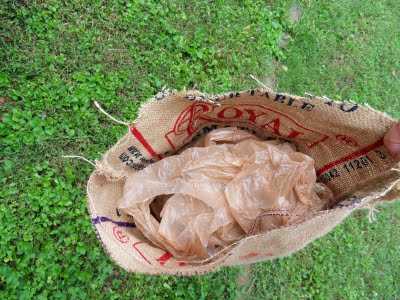
Step 2: For the head - turn a burlap rice bag inside out, cut off zipper, and fill with plastic grocery bags.
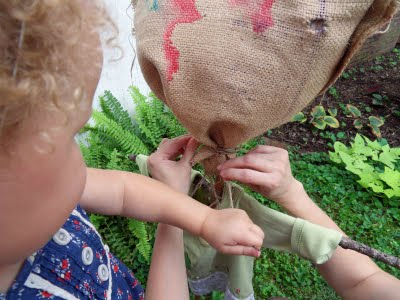
Step 3: Dress scarecrow with shirt and attach stuffed rice-bag head with string.

Step 4: To hold trousers up - make suspenders by attaching string to belt loops.
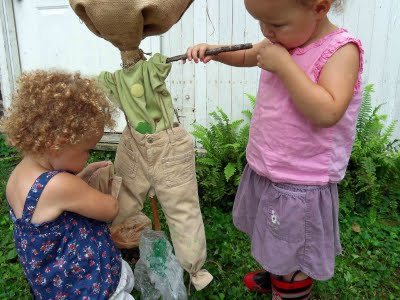
Step 5: Stuff trousers with plastic bags and tie the ankles with string.
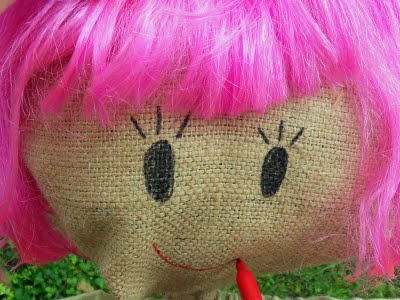
Step 6: Add wing, hat and draw a face.
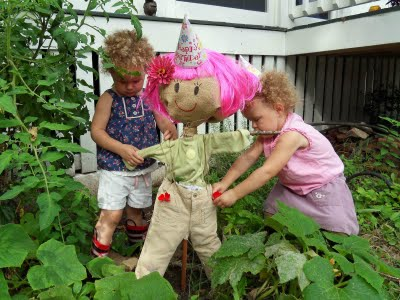
Step 7: Drive scarecrow into the ground and decorate with flowers.
This is by far our favorite project yet!
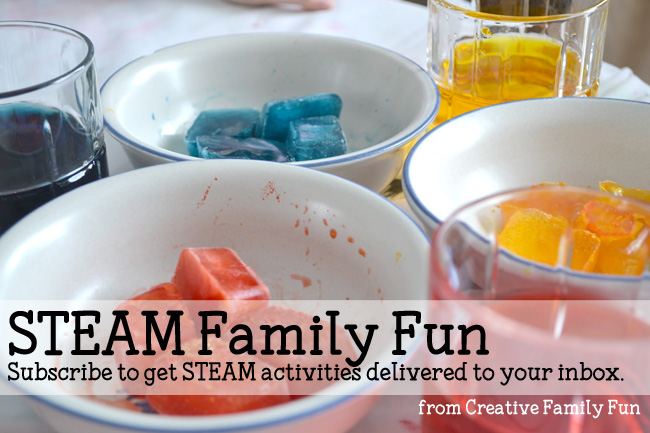
Fall Bucket List for Toddlers
Are you looking for some fun ideas to do this fall with your toddler? Have you thought about making a fall bucket list?
This fun fall bucket list for toddlers is full of can’t miss, fun activities to do with your little one this season. But, don’t worry, it’s not too full and overwhelming.
Here are 10 great must-do fall activities that will engage all five senses. Have fun and explore fall together with your family.
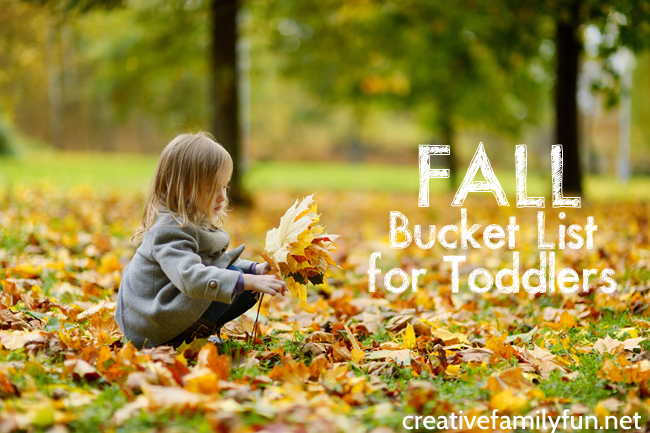
Fall Bucket List for Toddlers
1. Explore your sense of taste by eating an apple snack.
You can keep it simple and snack on a sliced apple or a bowl of apple sauce. Or you can get creative in the kitchen and try one of these delicious apple snacks for kids.
2. Hunt for acorns and practice counting.
Take a walk or a short drive to find a place to collect acorns. Bring along a small bag if you’d like to bring some home for a future activity.
Use the acorns to practice counting. Point and count – 1 acorn, 2, 3. Or, gather the acorns into small groups, for example a group of 2 or a group of 3. Keep it simple and have some fun learning!
This activity explores your sense of touch and your sense of sight.
3. Go on a leaf color hunt.
Explore with your eyes to find different colors of leaves.
Walk through your neighborhood or a nearby park. Can your toddler find a red leaf, a yellow leaf, or a brown leaf?
Look for the different colors and point them out as you go on a simple walk.
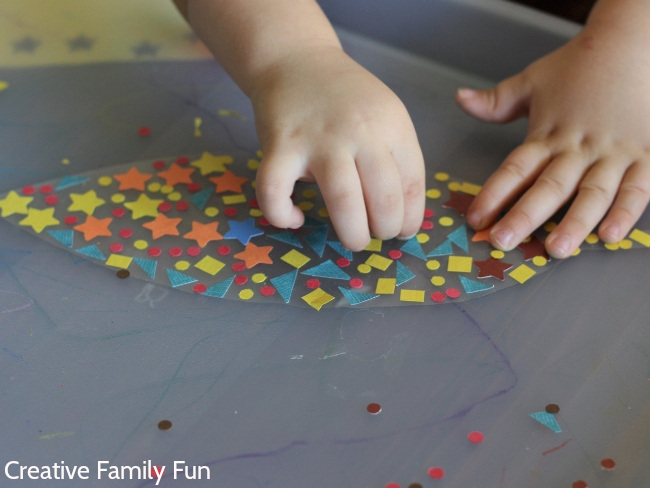
4. Do a leaf craft.
Continue exploring leaves with a leaf craft.
You can keep it simple by letting your toddler glue leaves to a large sheet of paper or stick them onto clear Contact Paper.
Or try this fun Leaf Shape Collage to make a fun and pretty fall decoration.
5. Shop for pumpkins and paint a pumpkin.
Take your toddler to a pumpkin patch, a farm stand, or even your local grocery store to shop for a pumpkin. Let them explore the pumpkins and pick out the one they like best.
Once they have a pumpkin picked out, let them paint the pumpkin. Spread out some newspaper, find an old shirt for a smock, and get out the paint and brushes. Let the explore and paint whatever they want on the pumpkin. The results will be beautiful!
6. Play in the fallen leaves.
Run, crunch, and jump in the fallen leaves!
Take your toddler outside and let them play. They can toss the leaves, roll in the leaves, or jump in a pile.
Get in there with them and play. You’ll have so much fun!
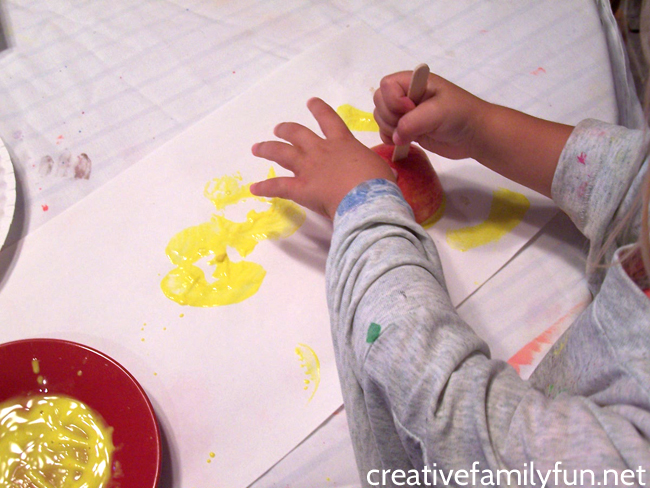
7. Make apple prints.
When I think of fall art projects, one of the first things to come to mind are apple prints. And, they are a perfect art project for toddlers.
You don’t have to get fancy, just let your child make prints. Here’s how we did it when my girls were little – try our trick to make the apples easier to hold.
8. Read a fall book.
Have a fall story time with a few good book. If it’s a pretty day, grab a blanket and have story time outside!
Try an apple-themed book from our list here. Or, check out this list of fall books from My Bored Toddler. There are so many great ones to choose from.
9. Play with a fall-scented play dough.
Engage your toddlers sense of smell and touch with a fun fall-scented play dough.
You can try this fun pumpkin play dough from Natural Beach Living or this apple pie play dough from The Imagination Tree. They would both be fun to play with and your toddler explores their sense of touch and smell.
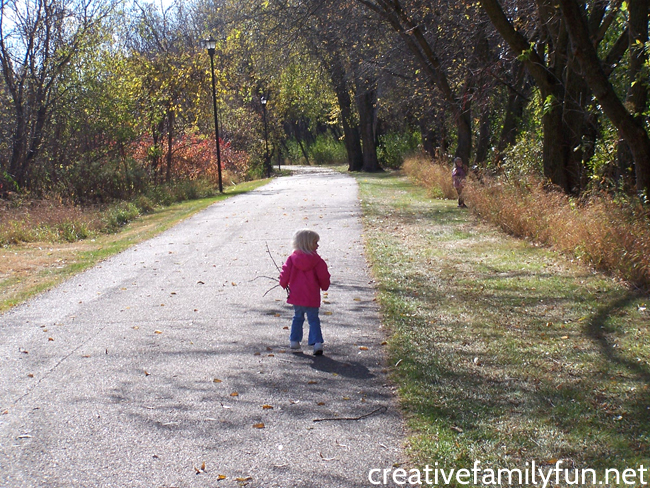
10. Go on a fall nature hike.
Toddlers aren’t too young for a fun hike. They key is to keep it simple and keep it short.
Find a pretty spot to walk and explore nature. Check out all of our tips for hiking with young children before you go head out.
Get out and explore fall with your little one!
This fall bucket list for toddlers is a fun way to explore all the senses while enjoying autumn.
Explore your sense of smell with some fall-scented play dough, your sense of taste with an apple snack, your sense of touch when you hunt for acorns, your sense of hearing when you play in the fallen leaves, and your sense of sight on a leaf color hunt.
Have fun exploring the season with our fall bucket list for toddlers!
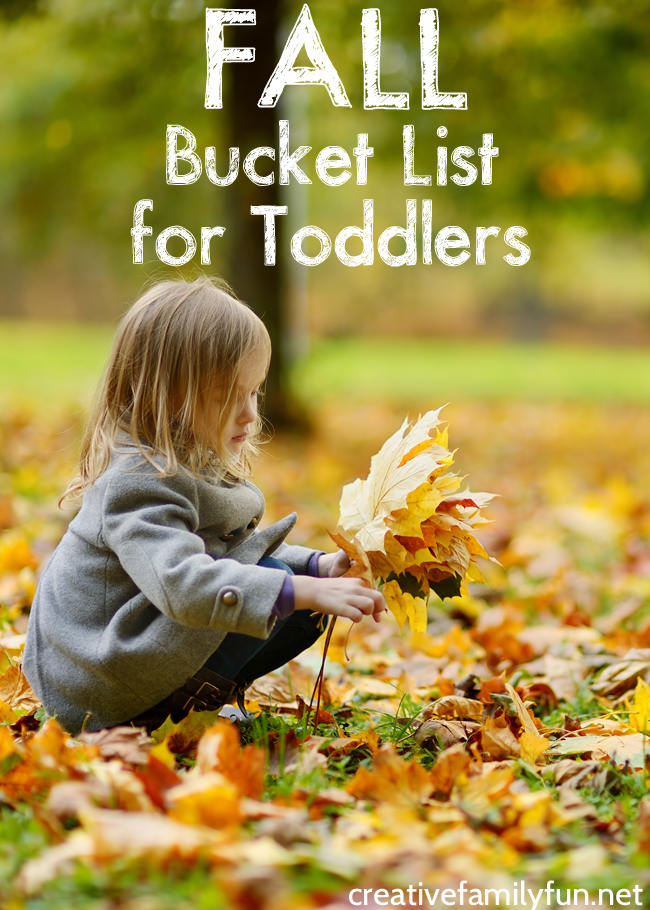
If you enjoyed our Fall Bucket List for Toddlers, the above photo is perfect for sharing on Facebook of saving to Pinterest.
You may also enjoy one of these fun toddler activities:
Backyard Color Match Movement Game
Water Play Ideas for Toddlers
Shape Hopscotch
Exploring Fall Toddler Process Art at Teaching 2’s and 3’s.
And you can find all of our toddler activities here:
Simple and Fun Activities for Toddlers
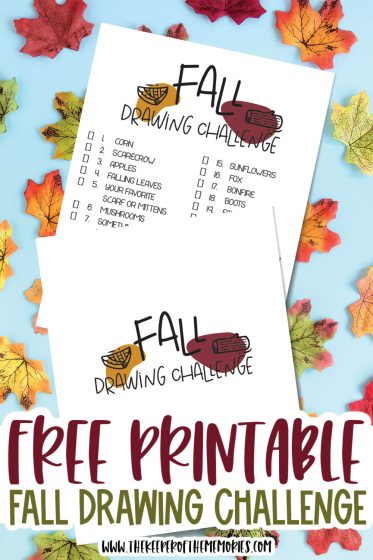
Free Printable Fall Drawing Challenge
Encourage creative thinking and strengthen fine motor skills while learning to draw using this Free Printable Fall Drawing Challenge. This drawing for kids printable is a great way to spend quality time with your kids this autumn. Grab yours today! We love drawing and painting and this fall drawing challenge is the perfect inspiration for…
Read More Free Printable Fall Drawing Challenge
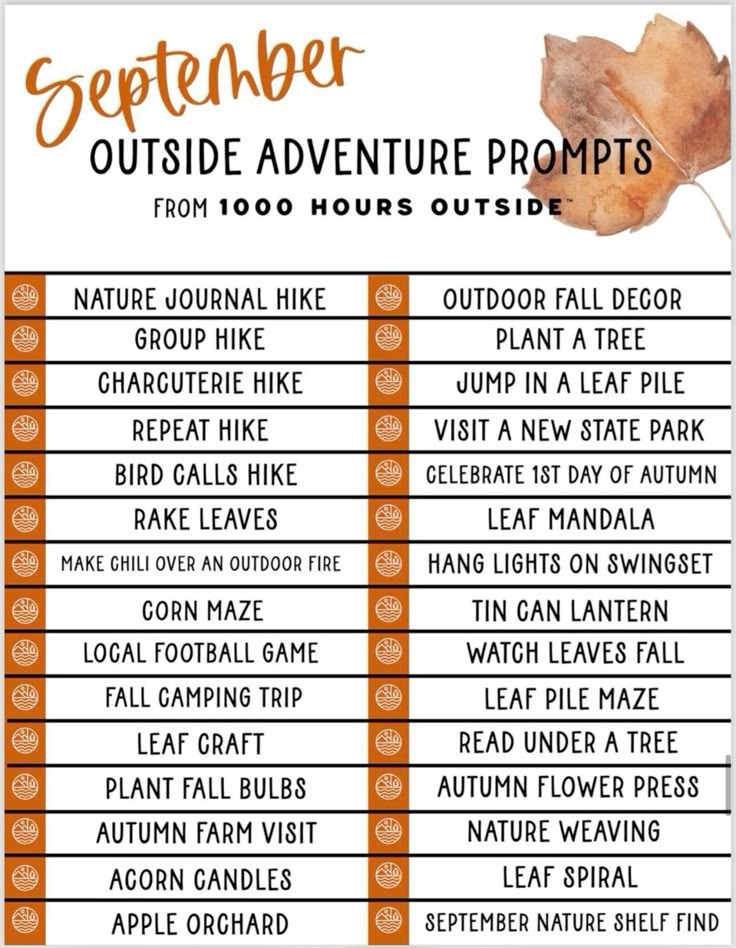
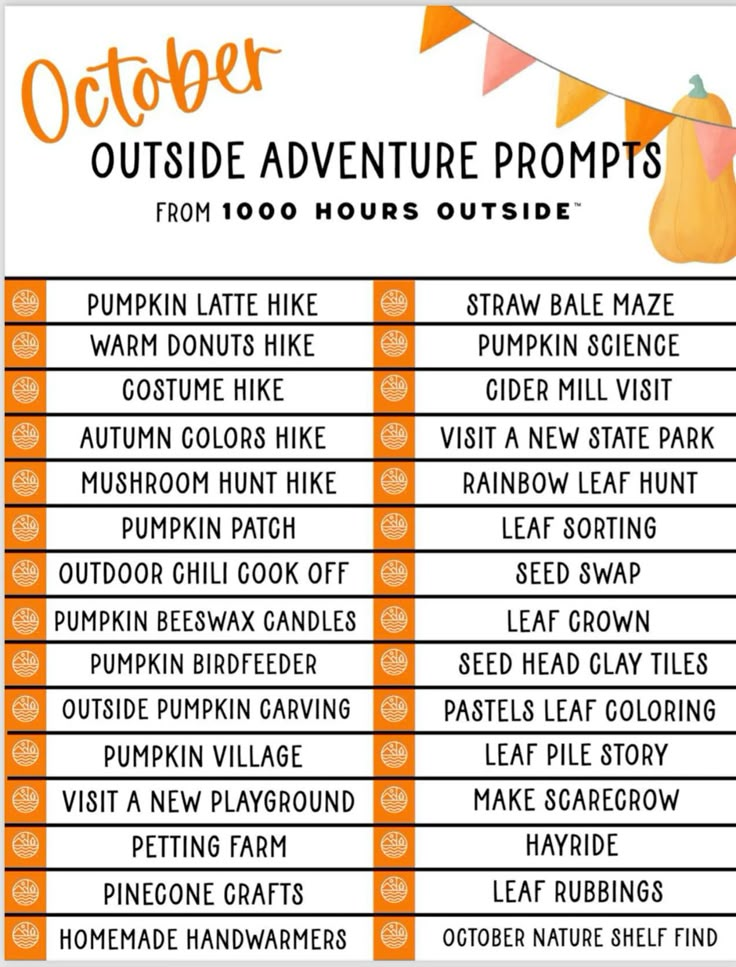
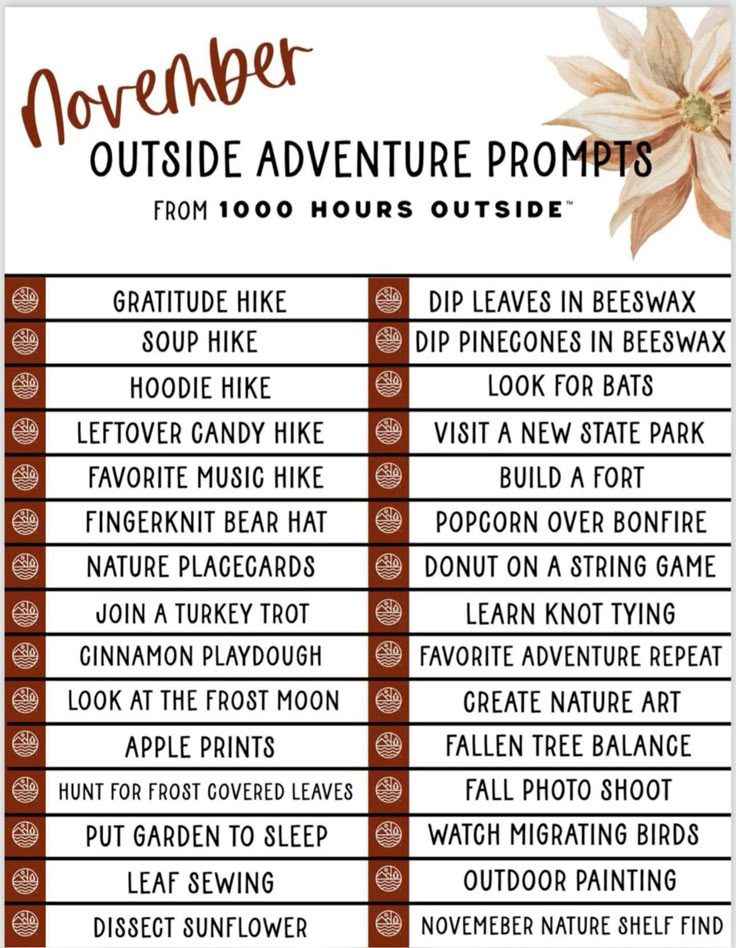
100 Ideas for Your Fall Bucket List
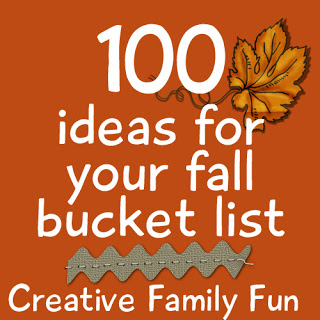
Do you make a fall bucket list? We did last year and it was a lot of fun.
Before making ours, I gathered together a massive list of 100 fun fall ideas.
I hope you find some fun fall activities!
Go on a hike
Bake an apple pie (Simple Bites)
Volunteer together as a family (The Good Long Road)
Bake apple and cheddar quick bread (Everybody Likes Sandwiches)
Make popcorn trees (Happy Hooligans)
Make old-fashioned corn cob dolls (The Magic Onions)
Make mini haunted houses (Kids Activities Blog)
Play flag football
Make your own Halloween costume (Inner Child Fun)
Make apple oatmeal whole wheat muffins (Train Up a Child)
Make some big leaf prints (Meaningful Mama)
Make a Thanksgiving leaf garland (The Artful Parent)
Go to your local high school football game
Make fall leaf crowns (Chasing Fireflies)
Explore a pumpkin (Creative Connections for Kids)
Make coffee filter fall leaves (Play Dr. Mom)
Make pumpkin spice pancakes (Annie’s Eats)
Play with autumnal play dough (The Imagination Tree)
Do some autumn leaf threading (Picklebums)
Laminate leaves and make magnets (Filth Wizardry)
Go on a fall camping trip (Go Explore Nature)
Make leaf people finger puppets (Make and Takes)
Make bird feeders
Go to a pumpkin patch
Make leaf confetti (Grow Creative)
Make applesauce
Bake a pumpkin pie (Very Best Baking)
Make land art with fall leaves (Red Ted Art)
Look for signs of fall (JDaniel4’s Mom)
Make a thankful tree
Go on a fall nature walk (My Merry Messy Life)
Make candy corn sugar cookies (Kathie Cooks)
Make fall nature suncatchers (The Artful Parent)
Make paper bag pumpkins (Mess for Less)
Make hand print turkeys
Play in pumpkin guts (Childhood Beckons)
Visit a corn maze
Put googly eyes on a pumpkin (Play Dr. Mom)
Make button and ribbon pumpkins (Toddler Approved)
Go indoor apple picking (Inner Child Fun)
Make drip-art pumpkins (The Imagination Tree)
Make paper plate turkeys (I {Heart} Crafty Things)
Visit an apple orchard
Make a “ghostly” pizza (My Recipes)
Make owl masks
Make candy apples (Martha Stewart)
Make pine cone bats (Almost Unschoolers)
Play with a fall sensory bucket (A Mom With a Lesson Plan)
Make autumn leaf place mats (Rhythm of the Home)
Play pumpkin bowling (Jeanetics)
Have a family movie night
Make Halloween yarn pumpkins (NurtureStore)
Make pumpkin bread (Martha Stewart)
Play in the leaves (Mama Smiles)
Make Thanksgiving Story Bracelets (Little Wonders’ Days)
Make acorn jewelry (5 Orange Potatoes)
Drink apple cider
Make a fall hand print wreath (Mess for Less)
Do apple stamping
Harvest and dry herbs (Kitchen Counter Chronicles)
Carve a pumpkin
Go on a leaf hunt (Teach Preschool)
Paint a pumpkin
Roast pumpkin seeds
Do some chuckin’ pumpkin painting (Childhood Beckons)
Paint with acorns (NurtureStore)
Do leaf rubbings
Do science with leaves (Learn Play Imagine)
Make caramel apple cheesecake cookies (Confessions of a Cookbook Queen)
Make googly-eye spider masks
Go star gazing
Make acorn nature collages (No Time for Flash Cards)
Create an autumn nature table (The Golden Gleam)
Make leaf print cookies (The Artful Parent)
Go on a backyard scavenger hunt
Make acorn cap candles (Paint Cut Paste)
Preserve autumn leaves with beeswax (Crafting a Green World)
Have fun in a fall-leaf maze (Happy Hooligans)
Make a magazine collage tree (Crafts by Amanda)
Eat apple nachos (Lynn’s Kitchen Adventures)
Decorate your windows for fall (Growing a Jeweled Rose)
Go on a thankfulness walk (Go Explore Nature)
Make your own fall leaf connect-the-dots (My Kids Make)
Have a Halloween party
Play with cinnamon pumpkin spice play dough (Mom to 2 Posh Lil Divas)
Play fall “I Spy” (Spell Outloud)
Start a nature notebook (KC Edventures)
Make autumn mobiles (Red Ted Art)
Make Painted Leaves (Small for Big)
Make a nature shadow box (Teach Preschool)
Make a paint stick scarecrow (Crafts by Amanda)
Go on a playground scavenger hunt (KC Edventures)
Make fall leaf lanterns (Imagine Childhood)
Go on a lantern walk (The Golden Gleam)
Make a paper bag football (No Time for Flash Cards)
Make a list of what you are thankful for
Make some bubbling brew (Se7en)
Make pumpkin mummies (Hands On: As We Grow)
Send Halloween Cards
Make a pine cone weather station (Science Sparks)
I hope this list gives you some ideas for your own fall bucket list. What would you include?
Autumn Scavenger Hunts for Kids
I don’t know about you, but I always want to get outside on a beautiful fall day to look at the colors and enjoy the crisp cool air.
These fun autumn scavenger hunts are the perfect family activity to get you and your kids outside.
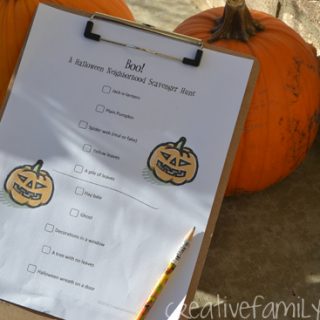
Neighborhood Halloween Scavenger Hunt
Explore the Halloween decorations in your neighborhood with this fun scavenger hunt.
Continue Reading
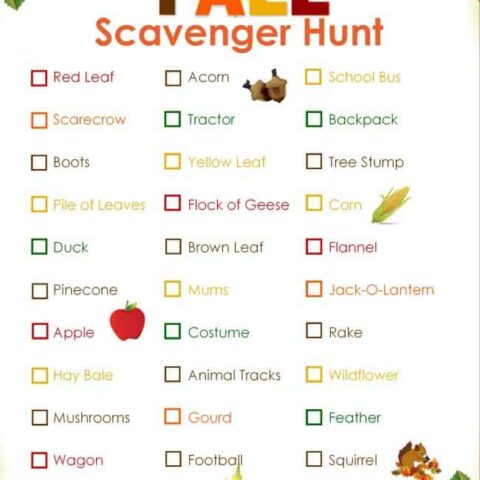
Printable Fall Scavenger Hunt
This fall scavenger hunt has 33 items which makes it perfect for a group activity.
Continue Reading
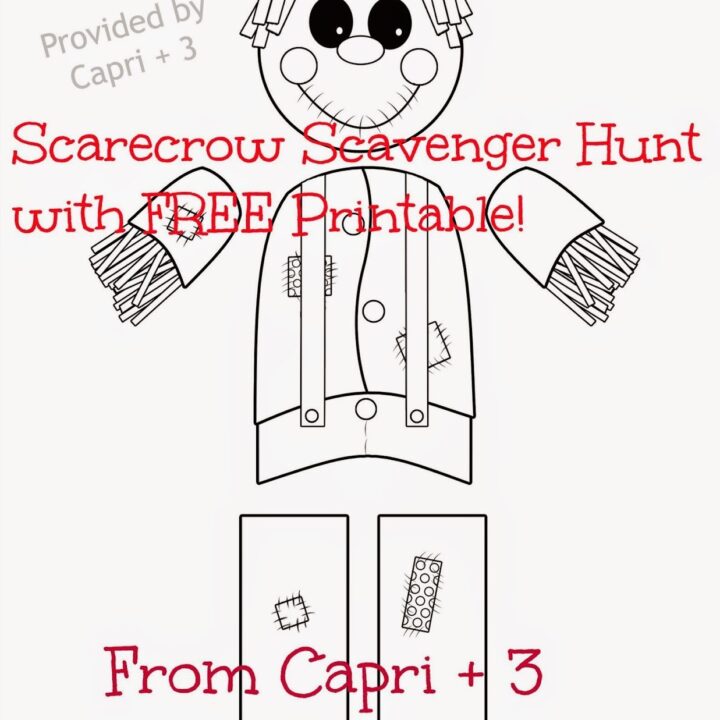
Scarecrow Hunt with FREE Printable
Hide the pieces of a scarecrow around the house and let your kids find them to put together with this great idea for a scavenger hunt craft.
Continue Reading
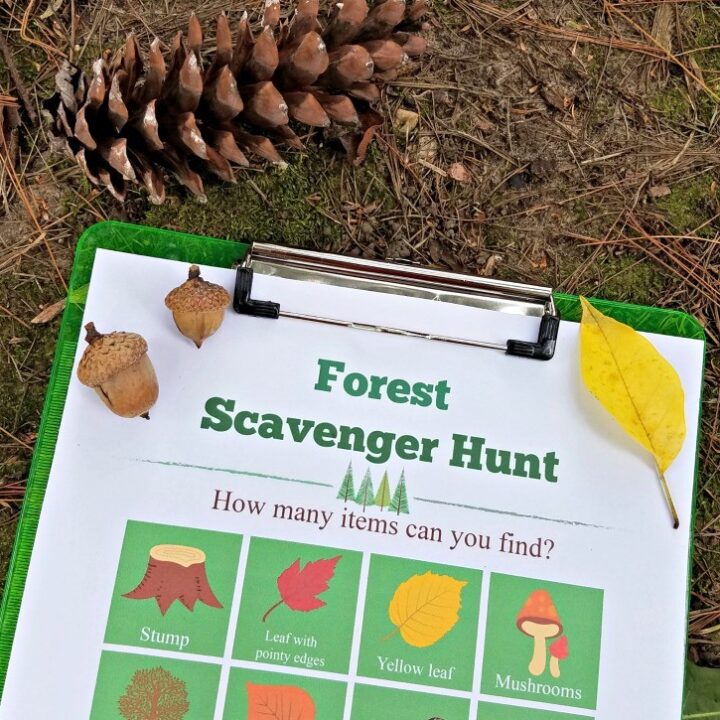
Forest Scavenger Hunt
Go on a scavenger hunt on a hike in the forest with this fun idea.
Continue Reading
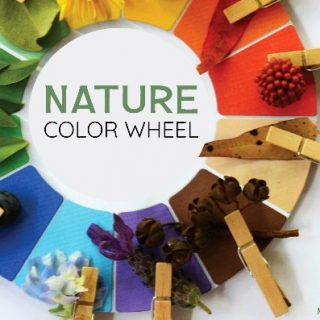
Nature Color Wheel Printable Scavenger Hunt
Explore the colors of fall with this fun nature color wheel scavenger hunt.
Continue Reading
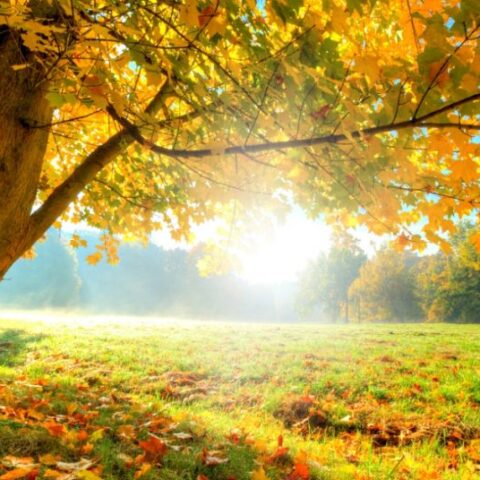
Signs of Autumn Fall Scavenger Hunt for Kids
Search for the signs of autumn with this fun scavenger hunt.
Continue Reading
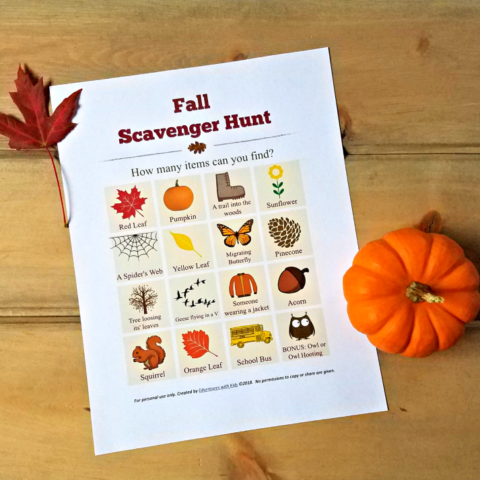
Fall Scavenger Hunt List
Go on a simple fall scavenger hunt with this list that would be perfect for a trip to the park or nature center.
Continue Reading
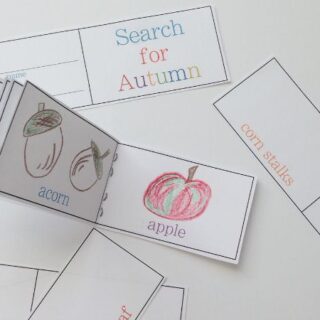
Search for Autumn Printable for Kids
Search for autumn and sketch your finds in this fun printable mini booklet.
Continue Reading
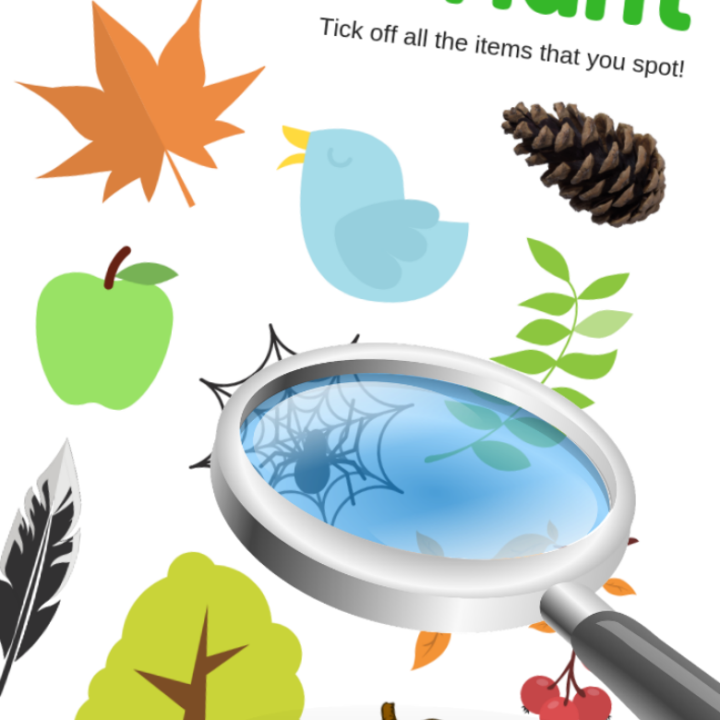
Nature Scavenger Hunt
This simple fall nature scavenger hunt is perfect for your toddler or preschooler.
Continue Reading
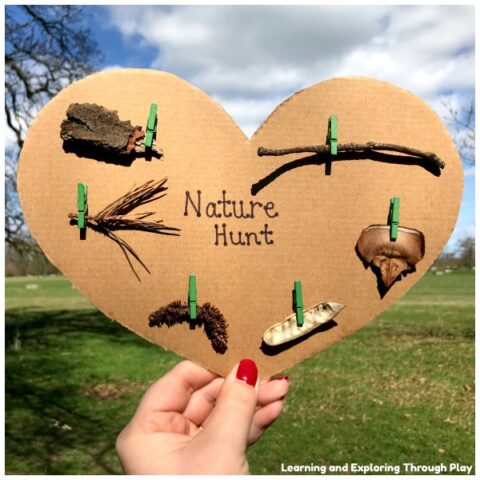
Nature Hunt Cardboard Hearts
Make your own nature hunt on these fun cardboard hearts.
Continue Reading
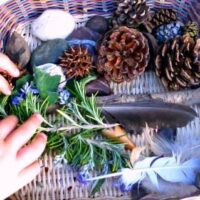
Nature Sensory Bin Scavenger Hunt for Kids
Collect items on a nature hunt to make your own sensory bin with this fun idea.
Continue Reading
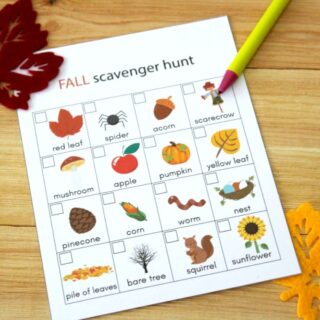
Fall Camping Scavenger Hunt
Go on a fall scavenger hunt at the campground with this fun idea!
Continue Reading
Which one is your favorite? I can’t decide, they’re all so awesome!
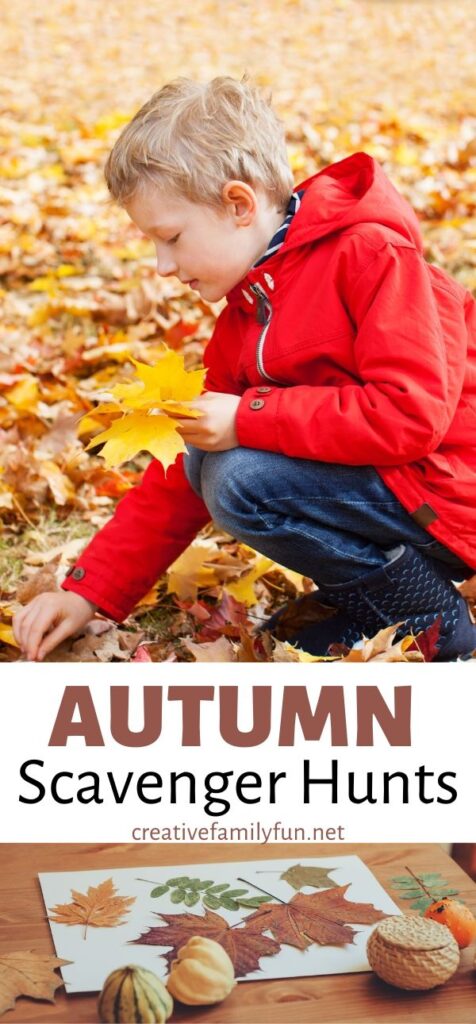
More Family Outdoor Activities
10 Fun Family Exercise Ideas
Discover a New Playground for Outdoor Family Fun
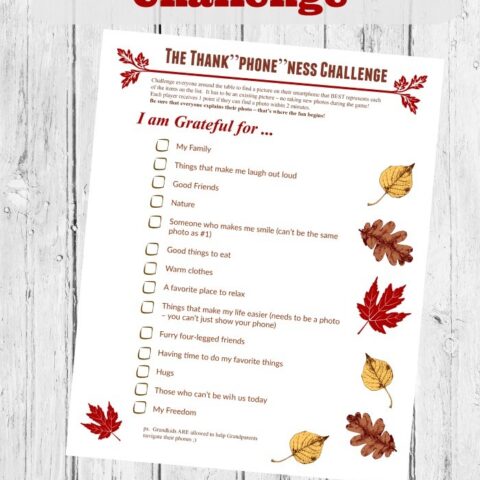
Thanksgiving Game: Photo Scavenger Hunt on Your Smartphone
Use this free printable Thanksgiving scavenger hunt to take photos of things you are thankful for.
Continue Reading
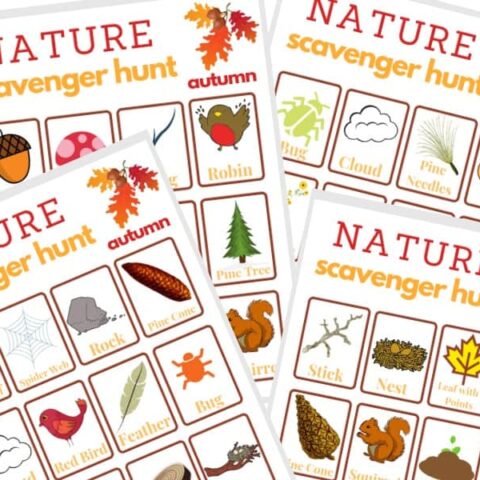
Fall Scavenger Hunt
This fall nature scavenger hunt is fun for kids of all ages, but the pictures on the printables makes it perfect for preschoolers.
Continue Reading
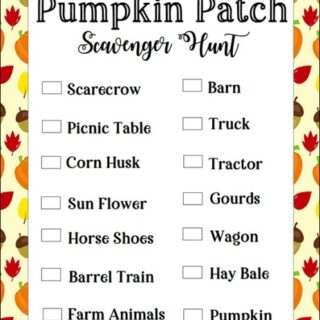
Pumpkin Patch Scavenger Hunt
Go on a scavenger hunt at the pumpkin patch with this fun scavenger hunt idea.
Continue Reading
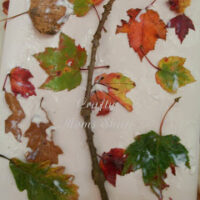
We're Going on a Leaf Hunt
Go on a leaf scavenger hunt with this fun idea based on the book We're Going on a Leaf Hunt.
Continue Reading
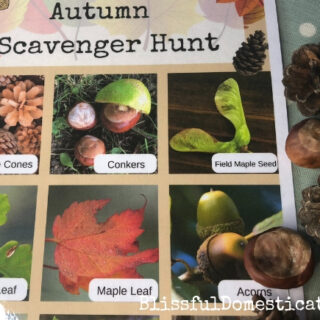
Autumn Scavenger Hunt for Kids
Hunt for items in nature with this fun scavenger hunt which included photos on the printable to help you identify everything.
Continue Reading
Outdoor Autumn & Winter Garden Activities for Children
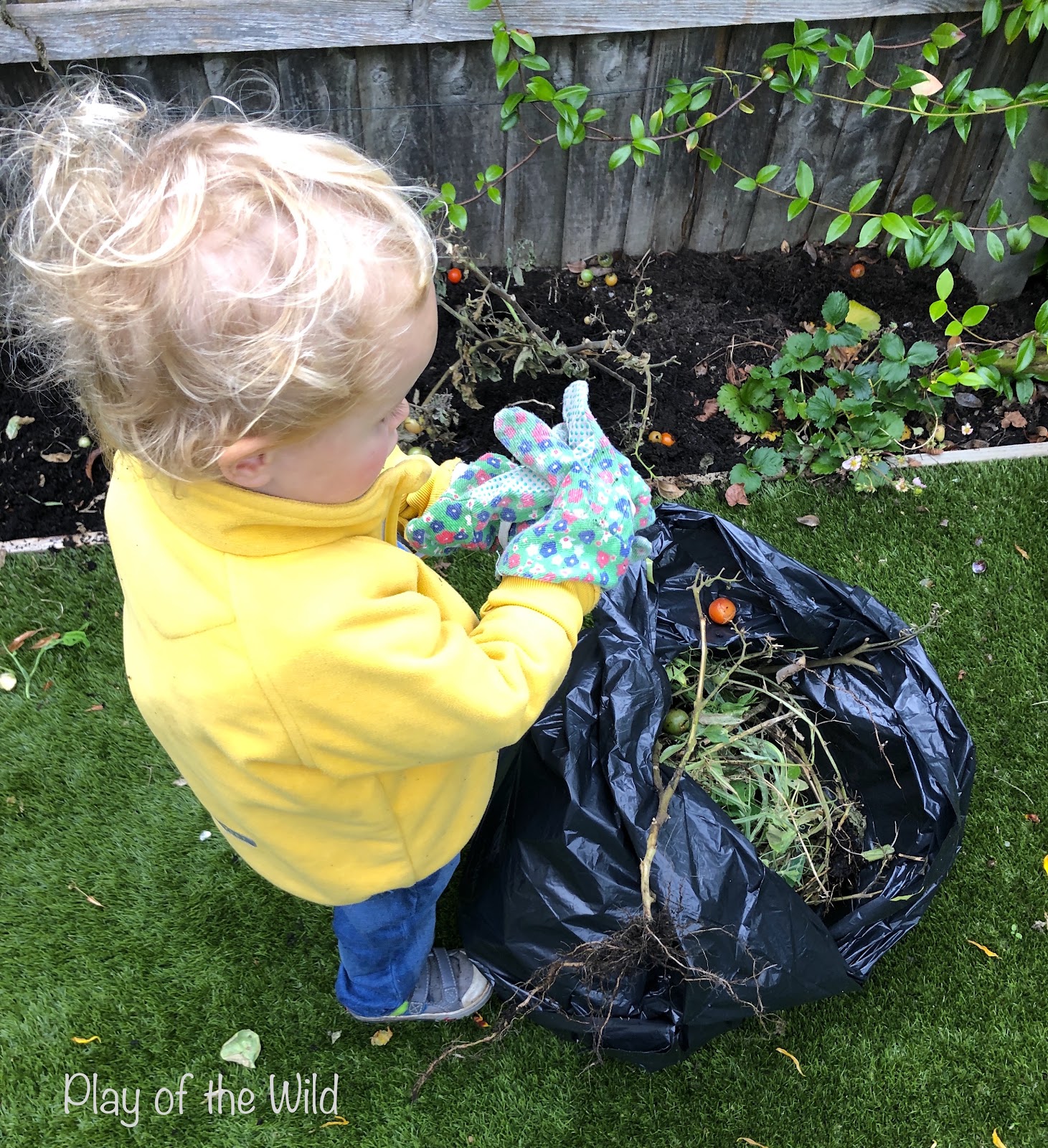
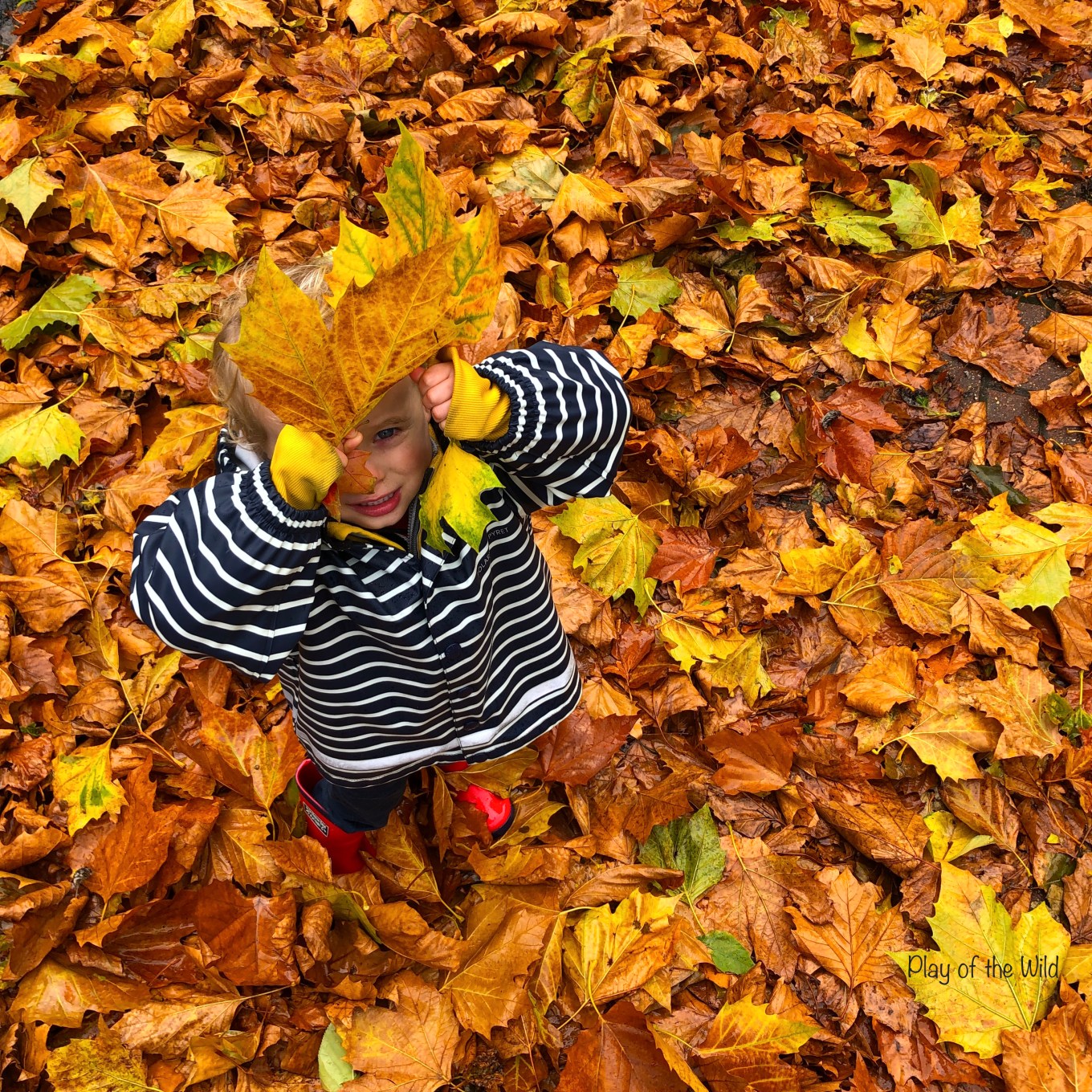
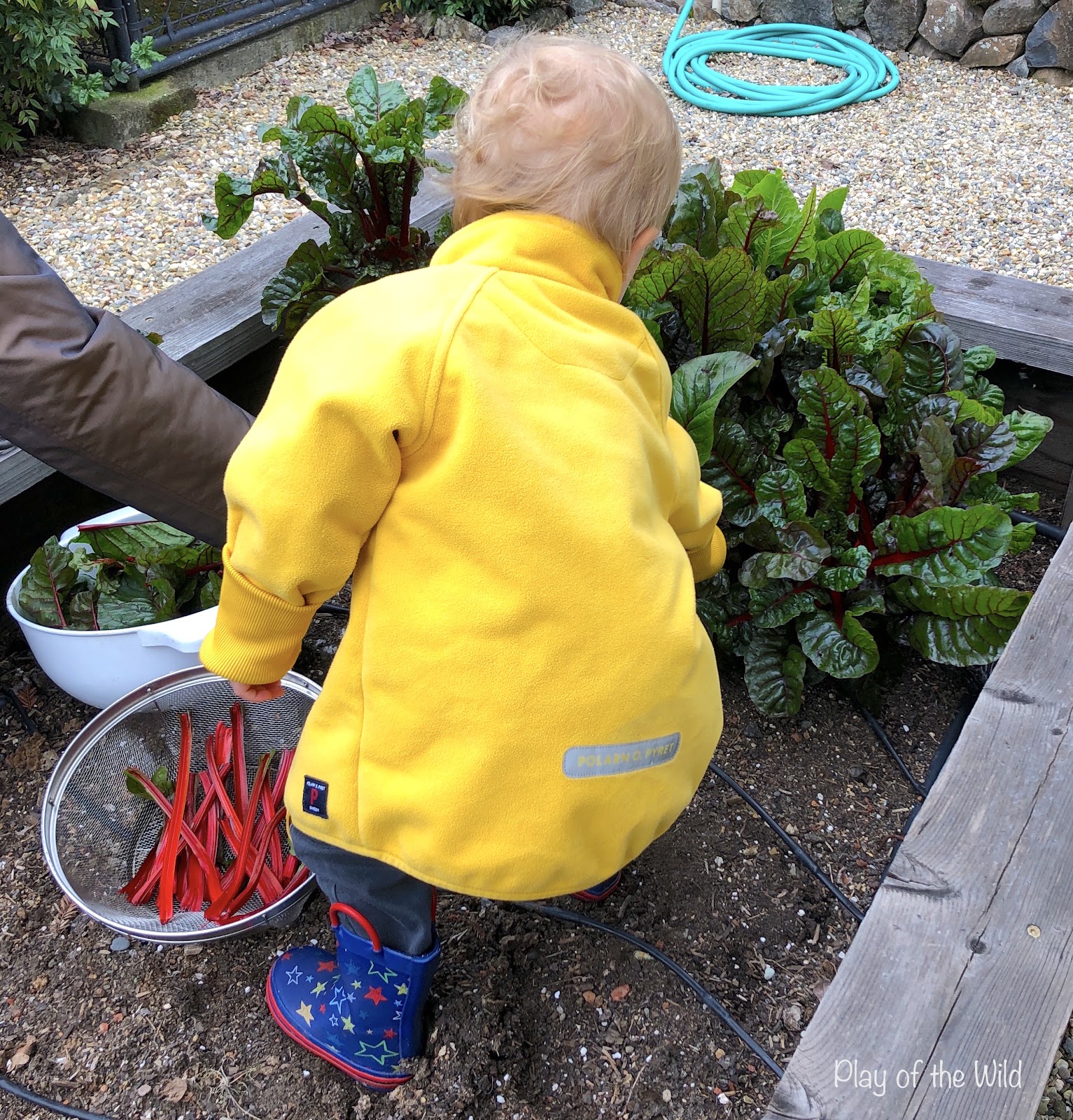
Outdoor Autumn & Winter Garden Activities for Children
While there is much to do in gardens in the spring and summer, people don’t tend to think about outdoor autumn and winter garden activities for children. Once the last of the squash and pumpkins have been harvested, people tend to forget about their gardens. However, the autumn and winter are great times for getting the garden tidied up and more.
Clearing old plants
When the growing season comes to an end and you have harvested all your crops, it’s time to start clearing the garden for next year! It may seem tempting to just turn your plants into the soil and leave them to rot. However, many plants can have a disease such as blight, so it is better to dig them up. They can then be put in the compost where they can properly break down. Children enjoy doing this and it also helps them to see the life cycle of plants and how plants begin to breakdown and decay.
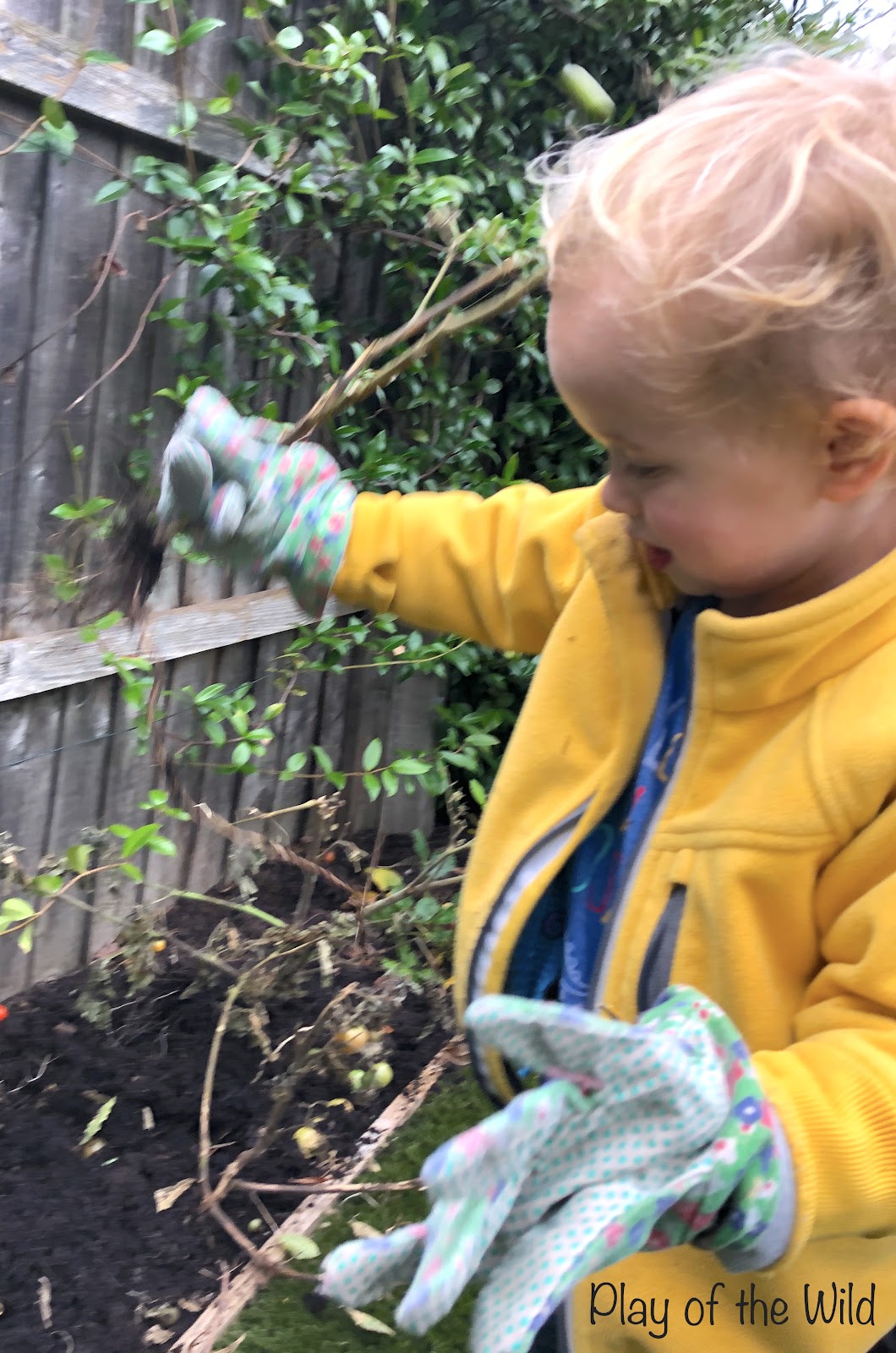
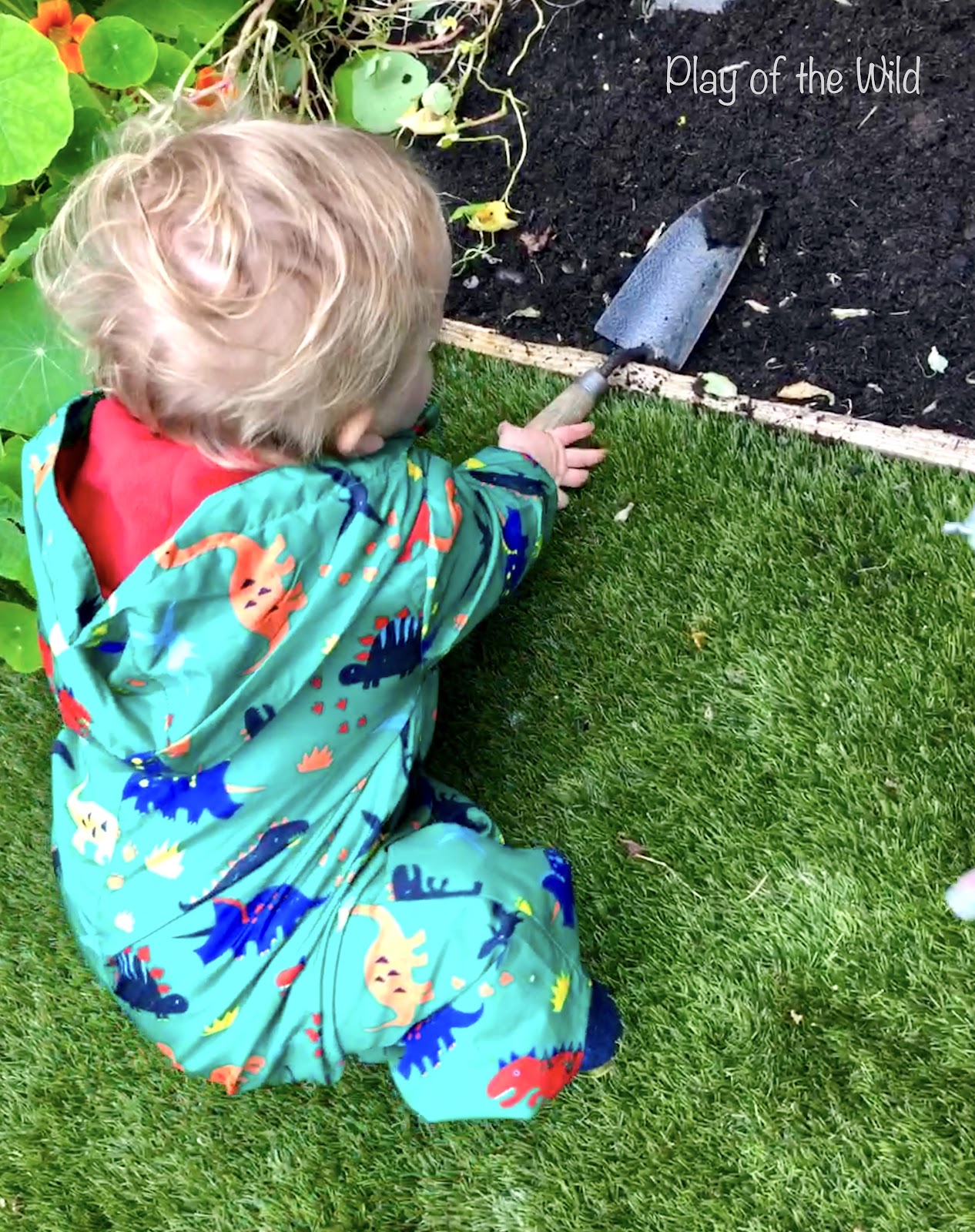

Raking & picking up leaves
In the autumn there are often many leaves falling from the trees. The amount can vary depending on where you live and the types of trees. If there are a lot of deciduous trees and plants where you live there will be a lot of leaves to rake up. Raking is good for children as it develops for gross motor skills and upper body strength, both essential to support children’s writing. Leaves are great for the compost as they are considered ‘brown’ waste, and it is essential for there to be a high proportion of them.
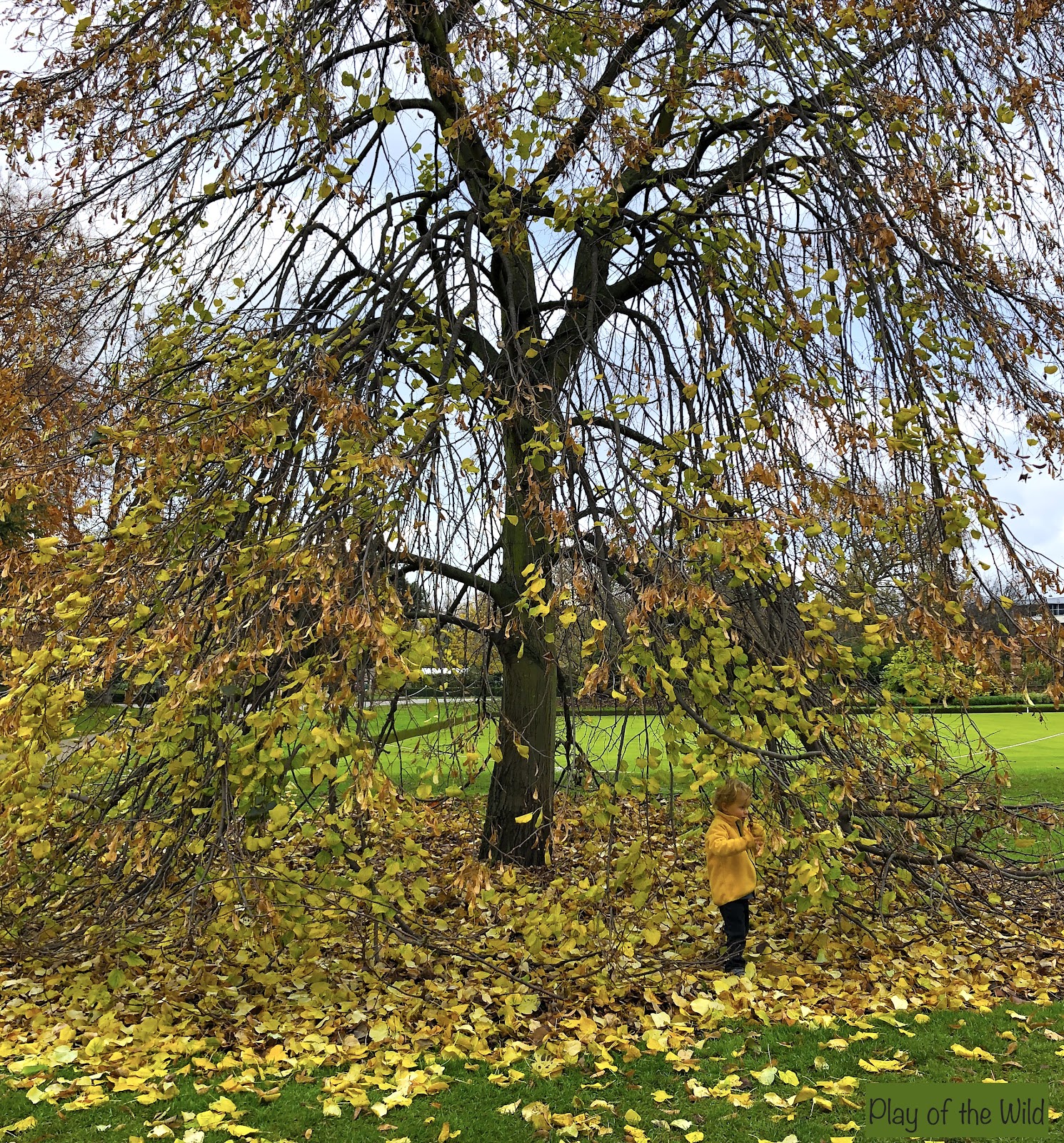

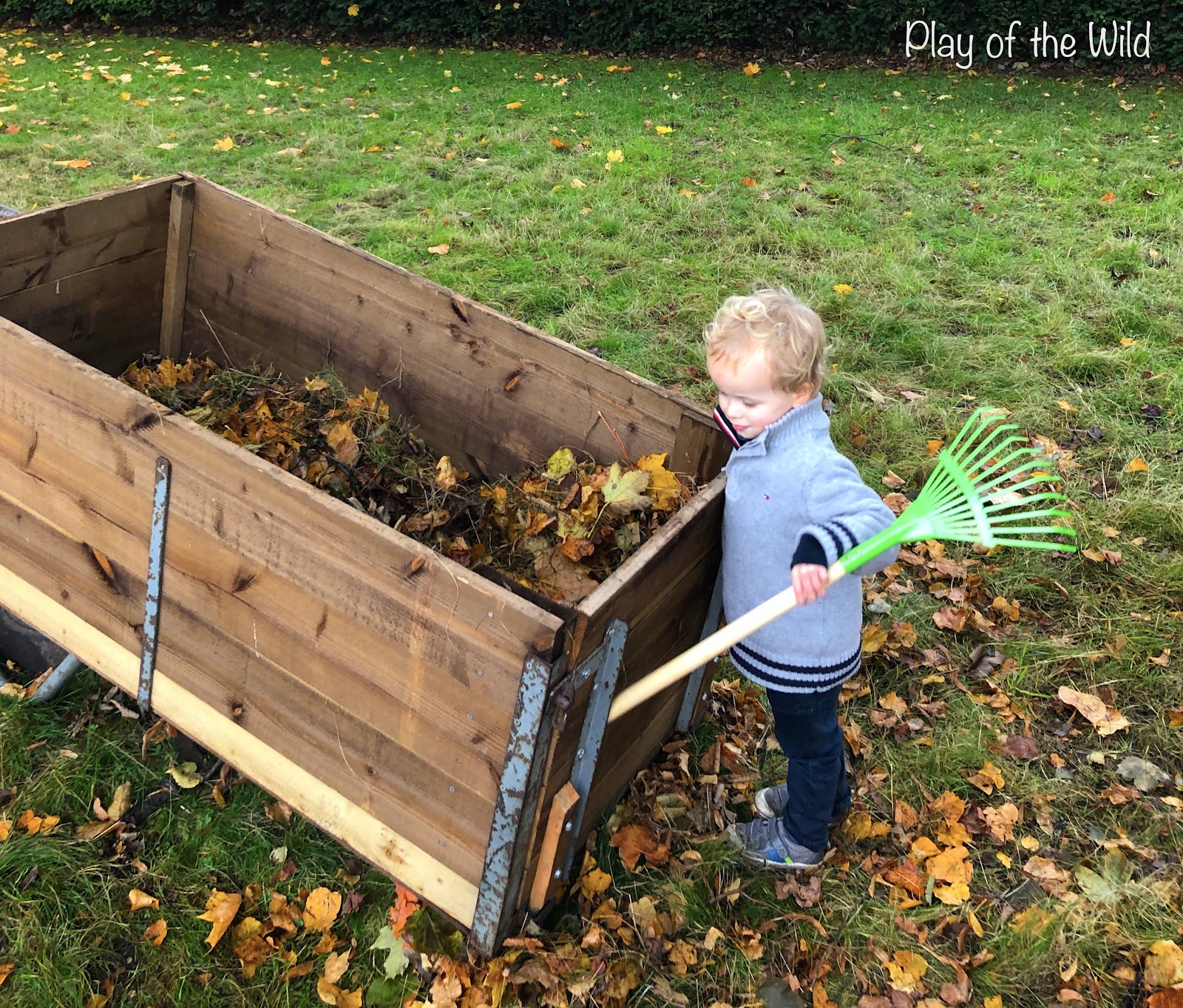
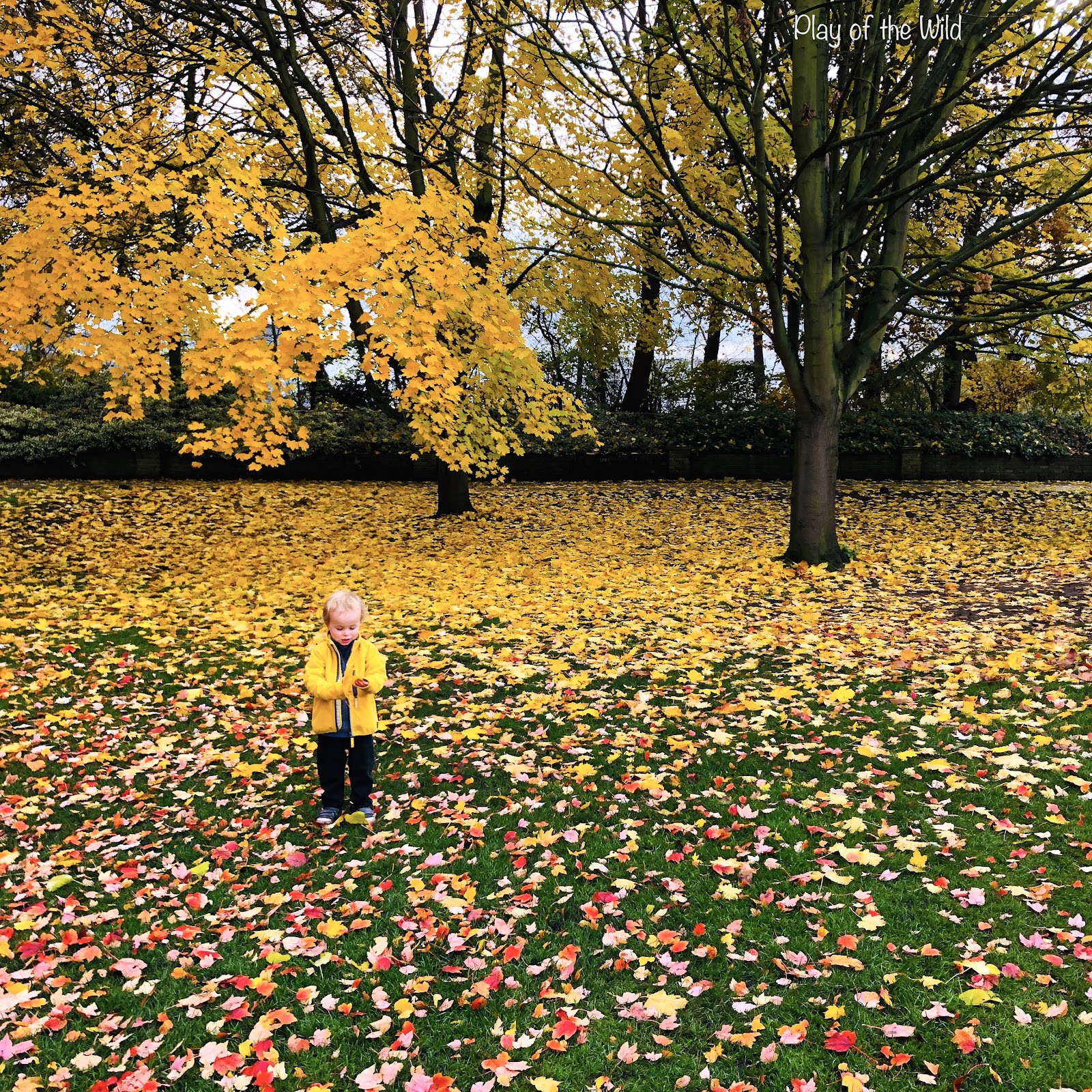
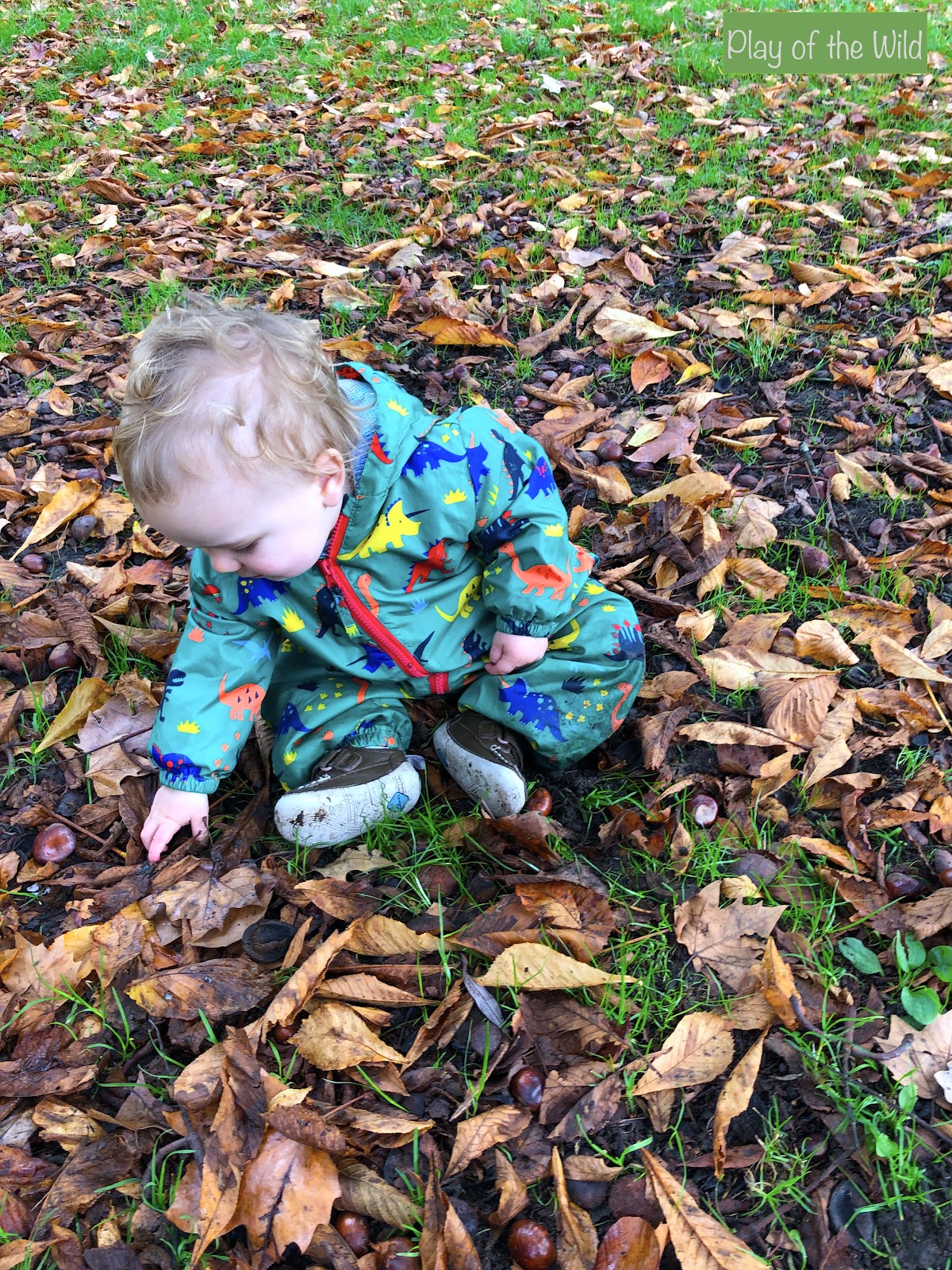
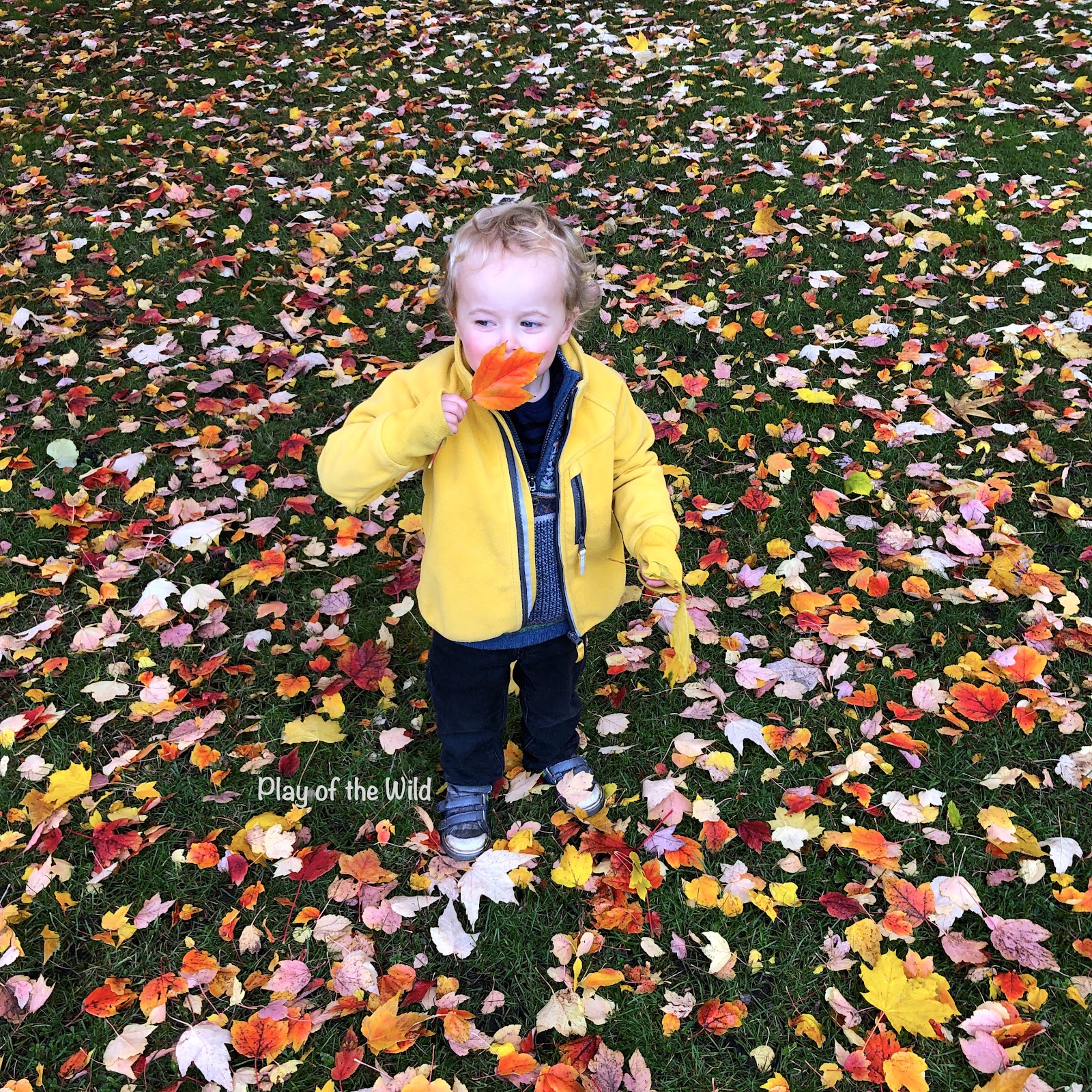
Compost
Compost is a great way to reuse old plants as well as household food waste. To compost, you need a combination of ‘green’ and ‘brown’ waste. Generally ‘green’ waste is fresh plants (and coffee grounds) and ‘brown’ is old plants such as brown leaves, paper, cardboard, etc. Green waste is high in nitrogen while brown waste is high in carbon. You are meant to combine both, with brown waste making up 50% to 75%. You’re more likely to have lots of green waste in the spring and summer and brown waste in the autumn. You may need to mix/stir your compost to help even it out. This will also help ensure that it gets enough oxygen so that the material can continue to break down. For more information on composting you may want to read the Royal Horticultural Society (RHS) leaflet on composting.
Planting bulbs
Planting bulbs is a lovely garden activity to do with children during the autumn. Many bulbs that grow into edible plants are planted in the autumn, then harvested in the spring and summer. There are also many child-friendly flowering bulbs that children can plant in the garden during the autumn. For tips and ideas on which bulbs to plant with children.
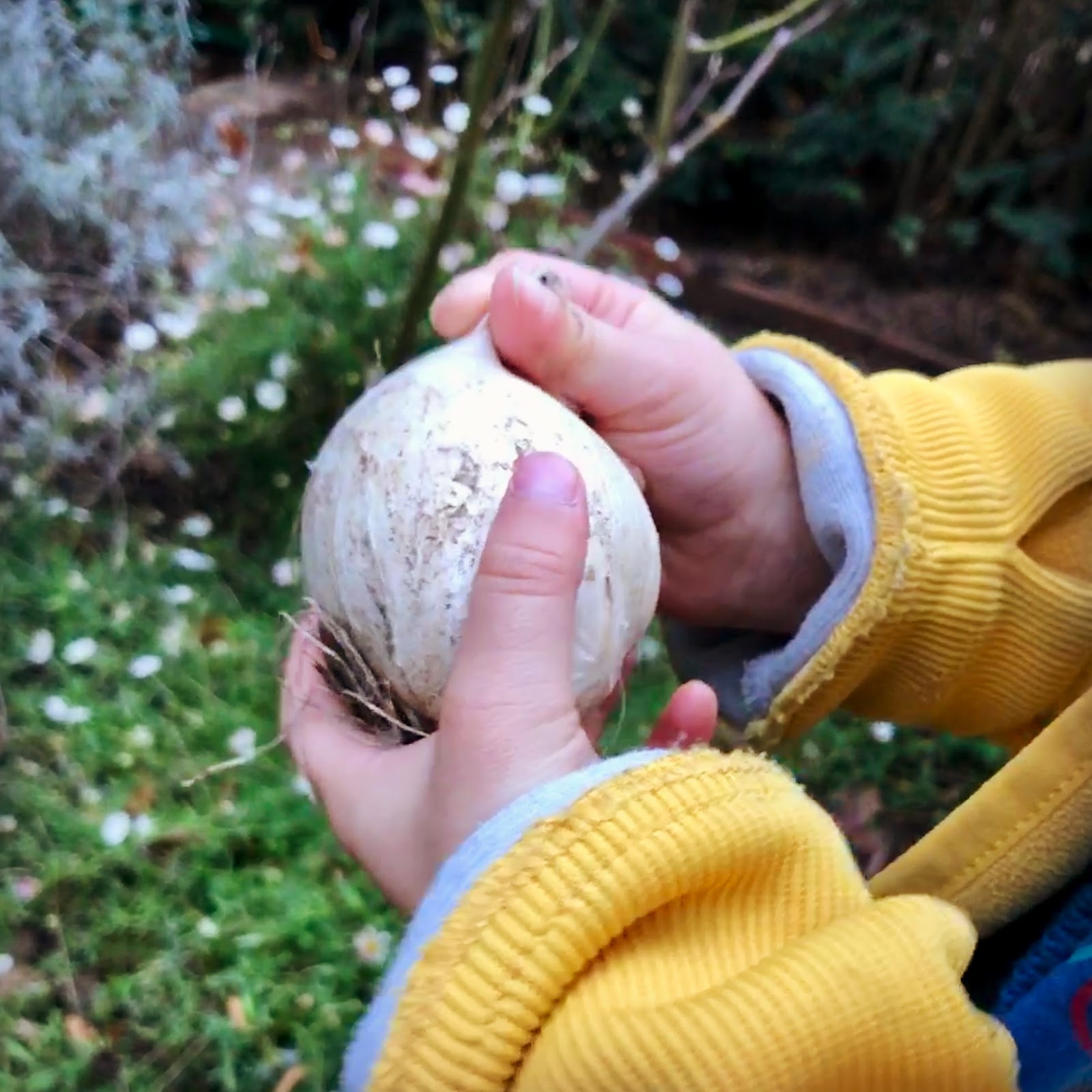
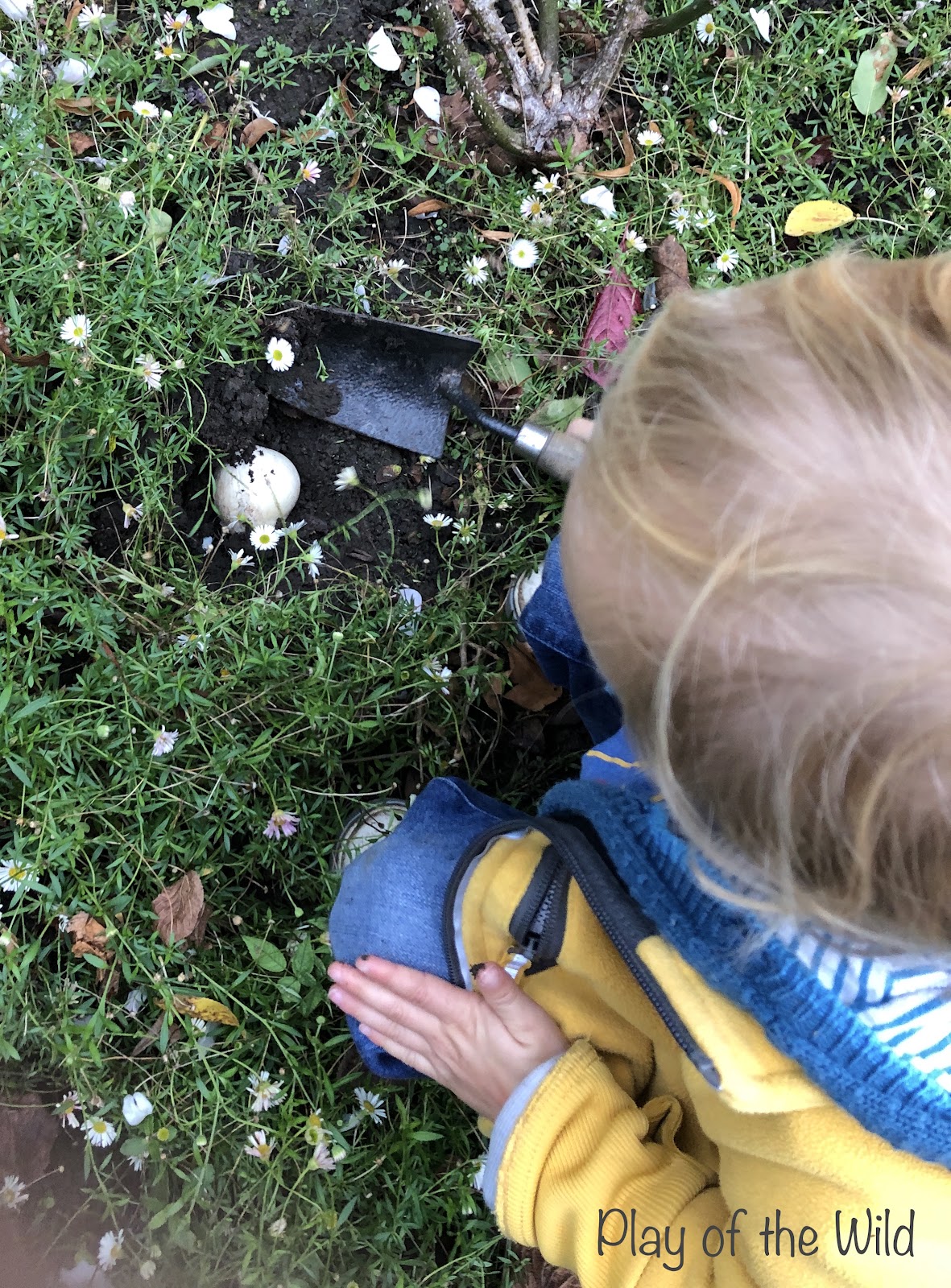
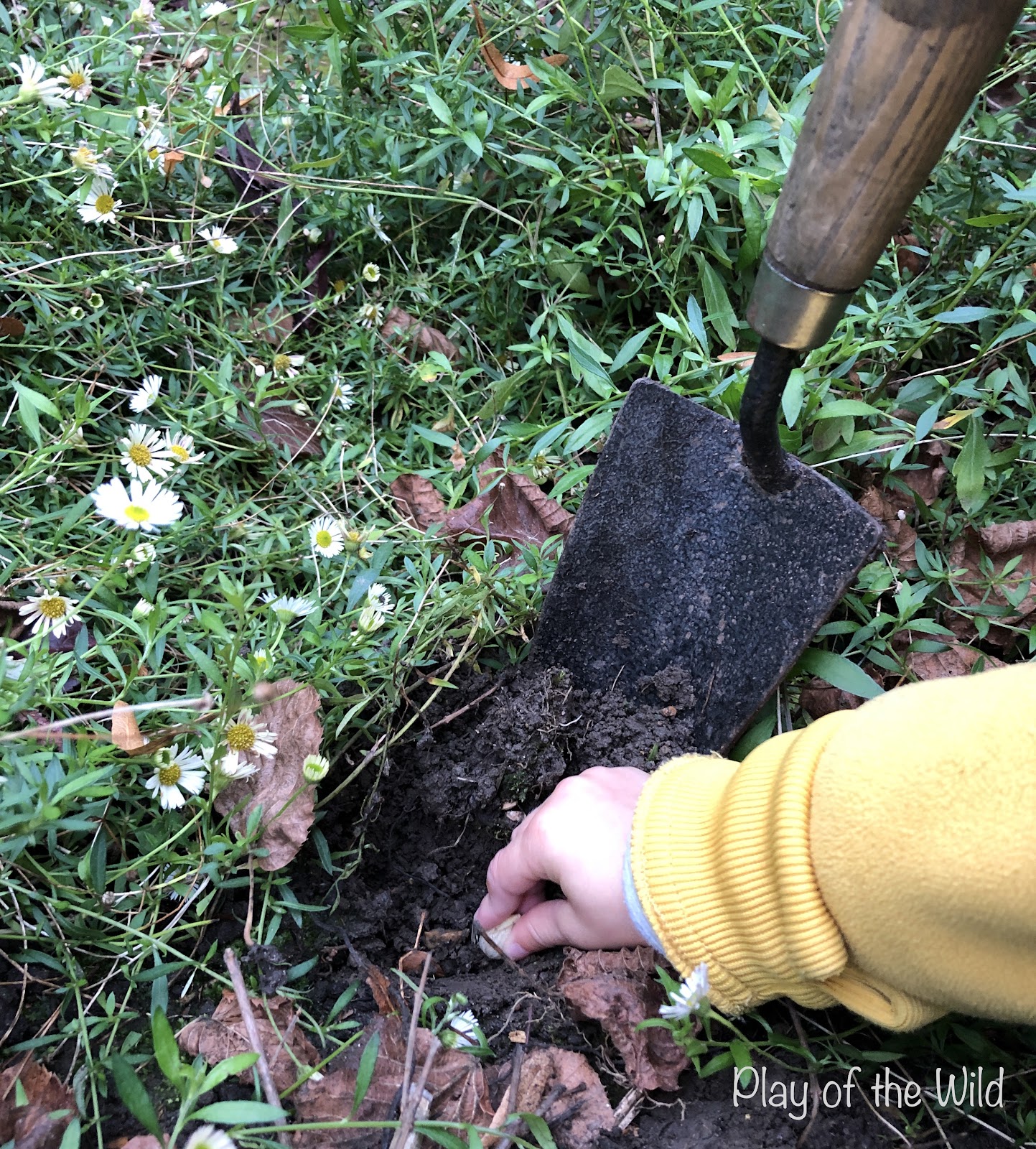
Plants to grow in winter
If you want to keep gardening through the winter, numerous vegetables are great to grow in winter. These tend to be hardy plants but they may need some protection from frost. This includes plants such as chard(Swiss chard or rainbow chard),Brussel sprouts, cabbage, leeks, kale, parsnips, and cauliflower (winter/spring sprouting), and more. Keep in mind that many of these need to be sown in the spring or summer to be harvested through the winter and early spring.
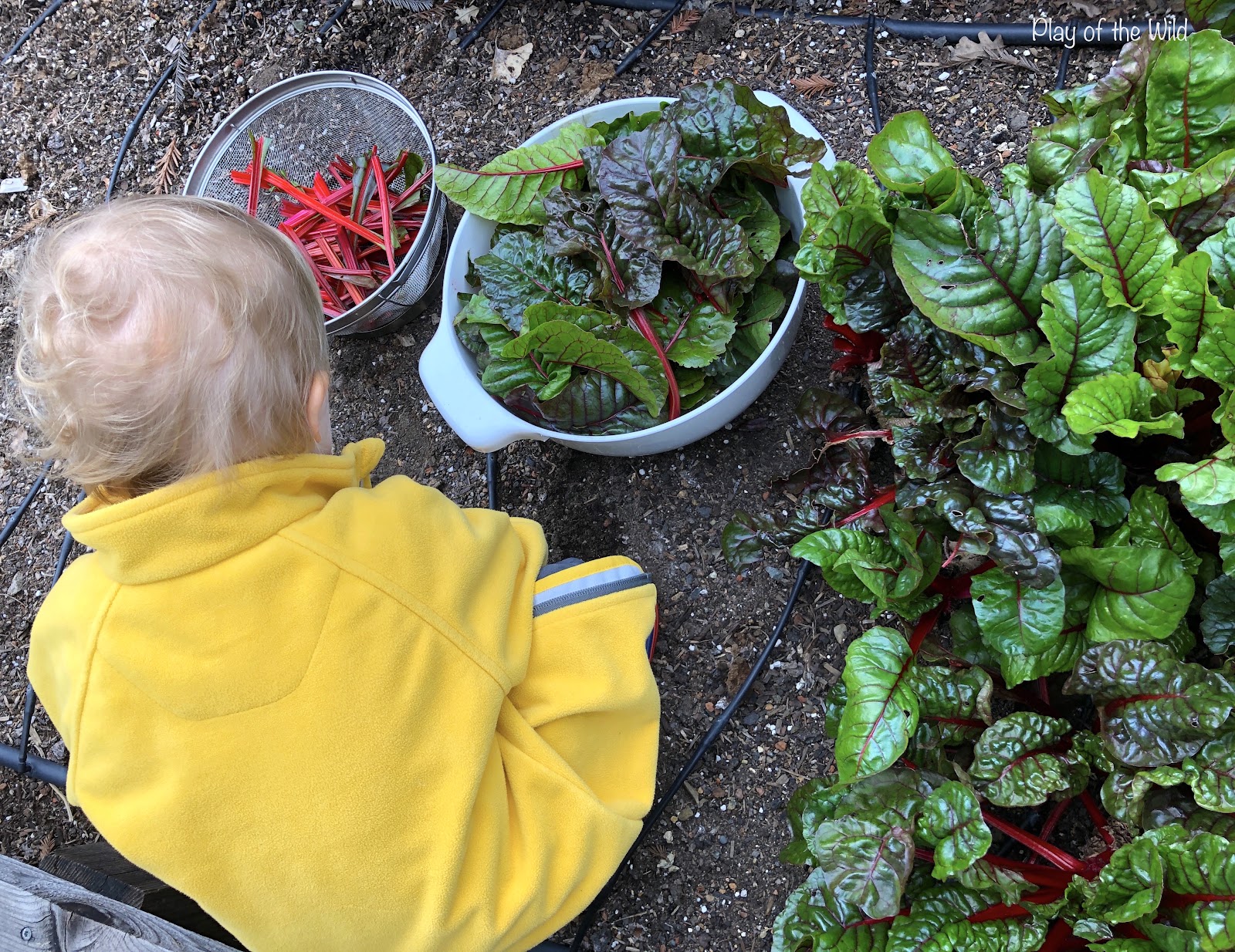
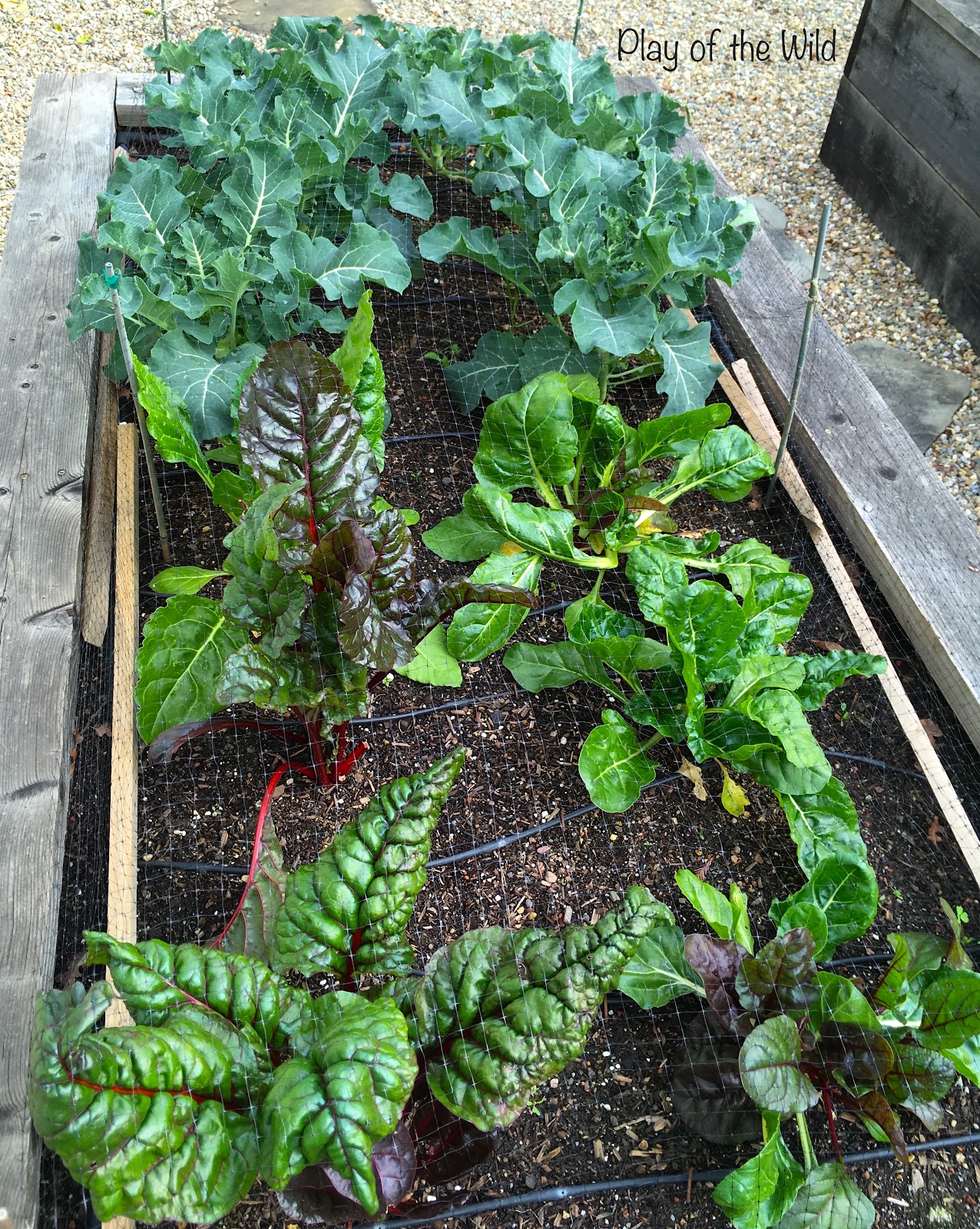
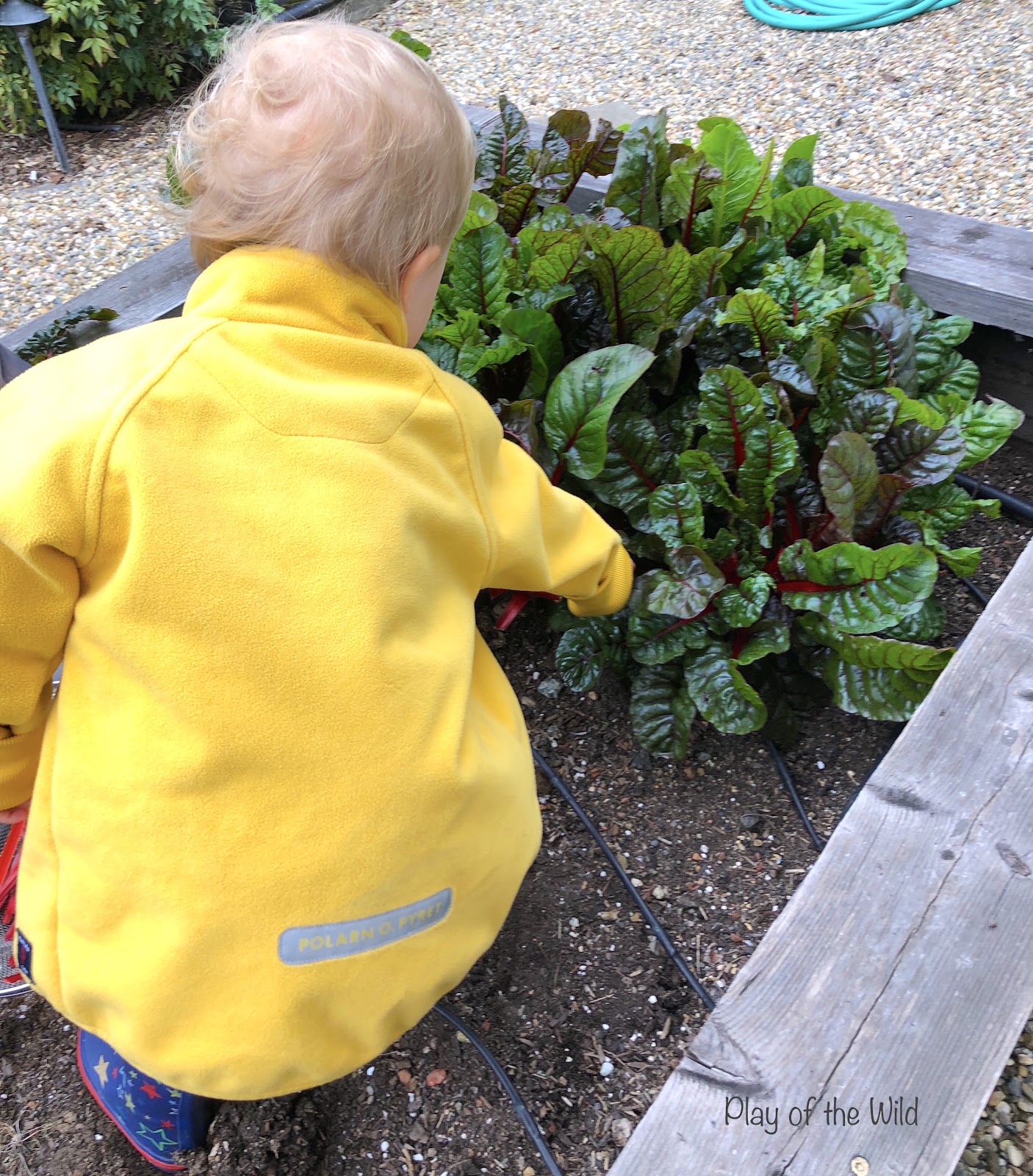
Collect seeds
The end of the growing season is an ideal time to collect seeds for next year. While some of this will need to be done in the summertime, some seeds can be collected throughout the autumn. For example, we normally collect our Nasturtium seeds sometime between August and November. See this post oncollecting seeds with children for tips on great flowers to grow with children and how to collect their seeds.


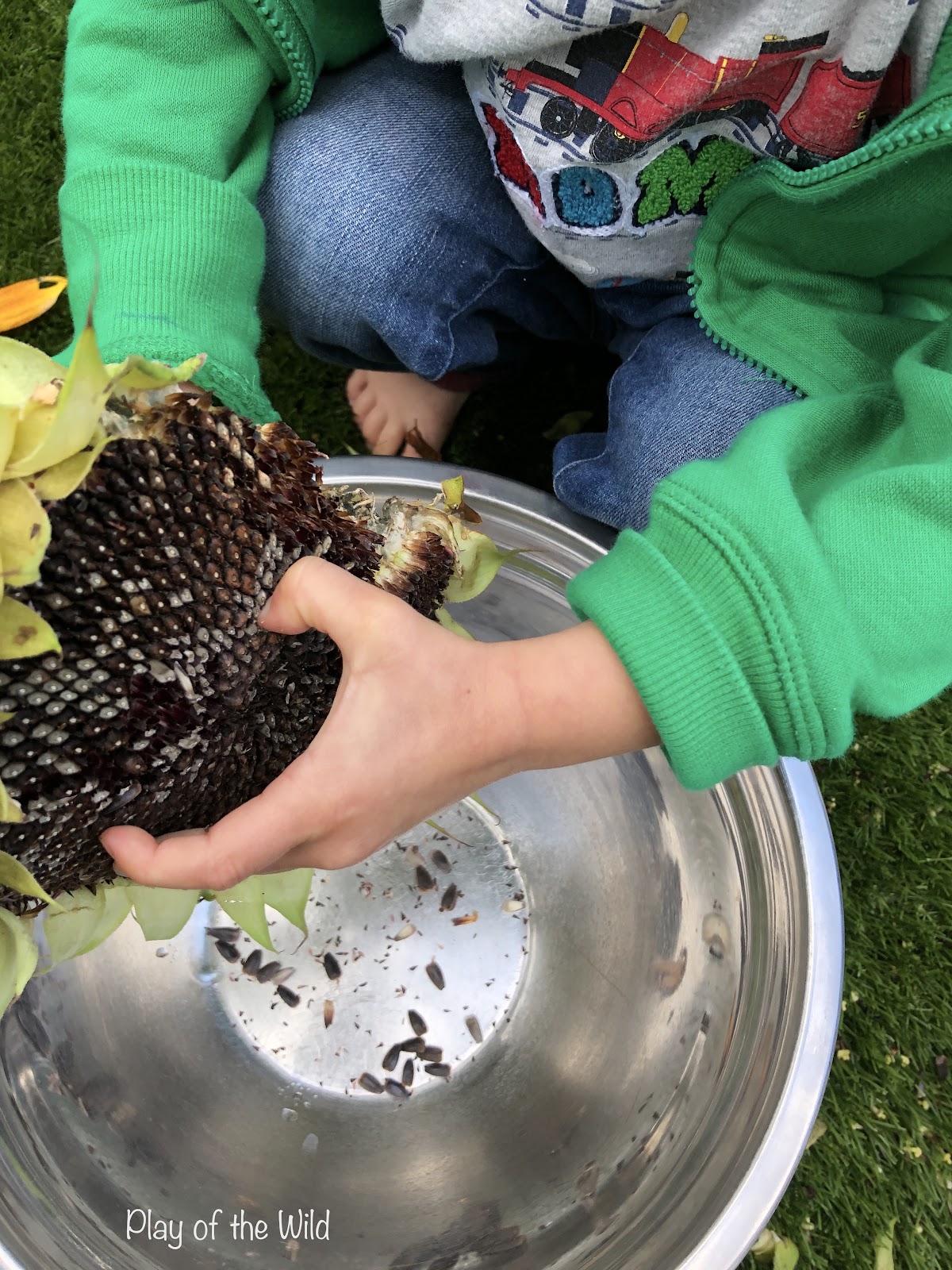
Make seed bombs
Seed bombs are a really fun outdoor activity to do in the garden in the autumn or winter. It’s a great chance for children to play with seeds and mud! They can make seed bombs and then enjoy throwing them in the garden or outside as a way to spread wildflowers. Sadly, some wildflowers are on the decline and many areas where they once grew have been destroyed. This will also help bees and butterflies that rely on wildflowers to live. Doing little things like planting wildflowers with seed bombs is a simple way for children to help the environment. See my post – Sowing & Spreading Wild Flowers with Seed Bombs.
Propagate plants in water
Propagating plants in water is a great autumn or winter gardening activity for children. Plants can be propagated in water from cuttings, offshoots or runners depending on the plant. They can be grown in water on an ongoing basis or they can be rooted and then planted out in the soil. Autumn is a good time to do this as there should be some good growths to take cuttings from. It’s a fun and easy activity to do with children with the right plants. See my post on propagating plants with childrenfor tips on how to do this.
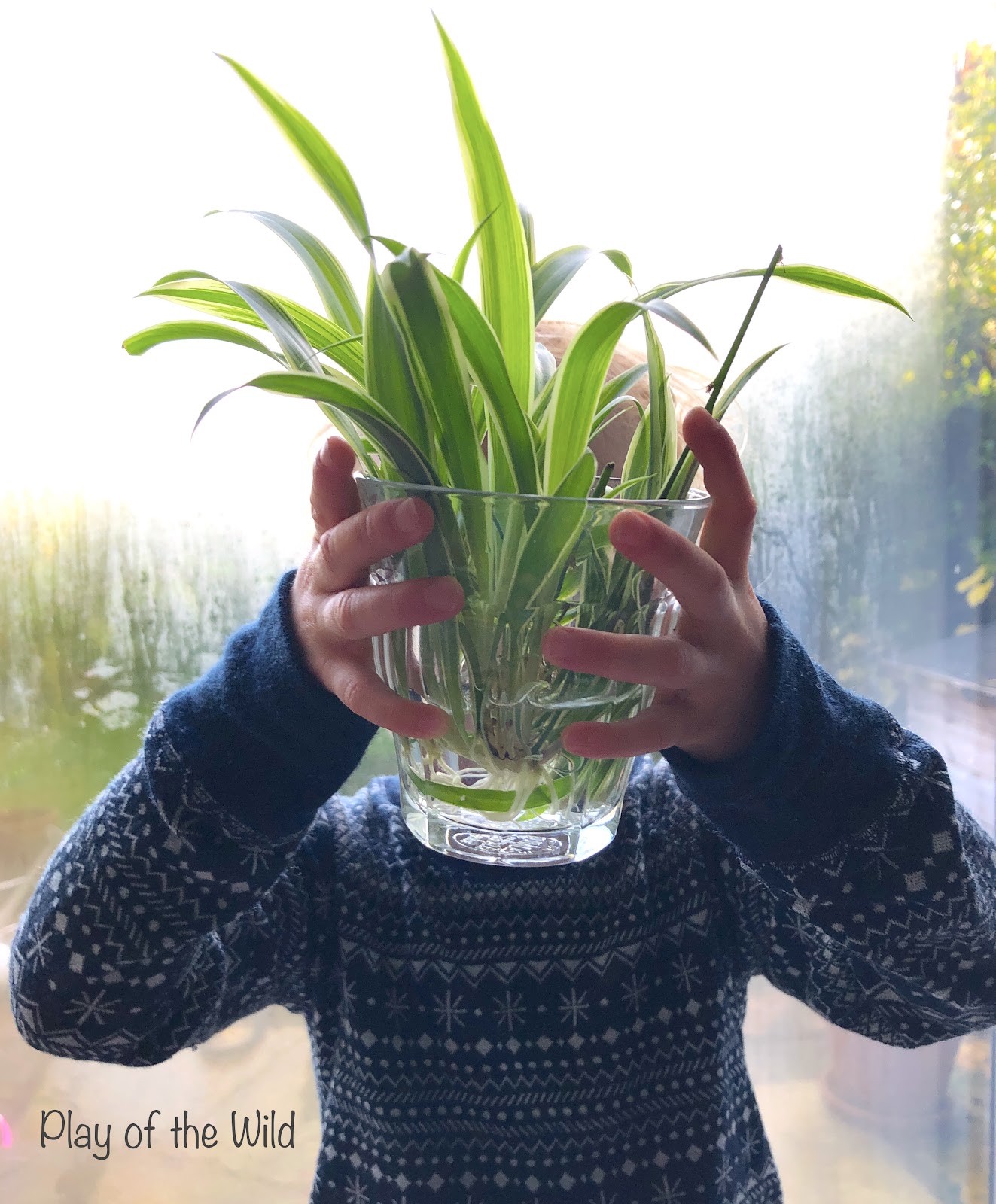
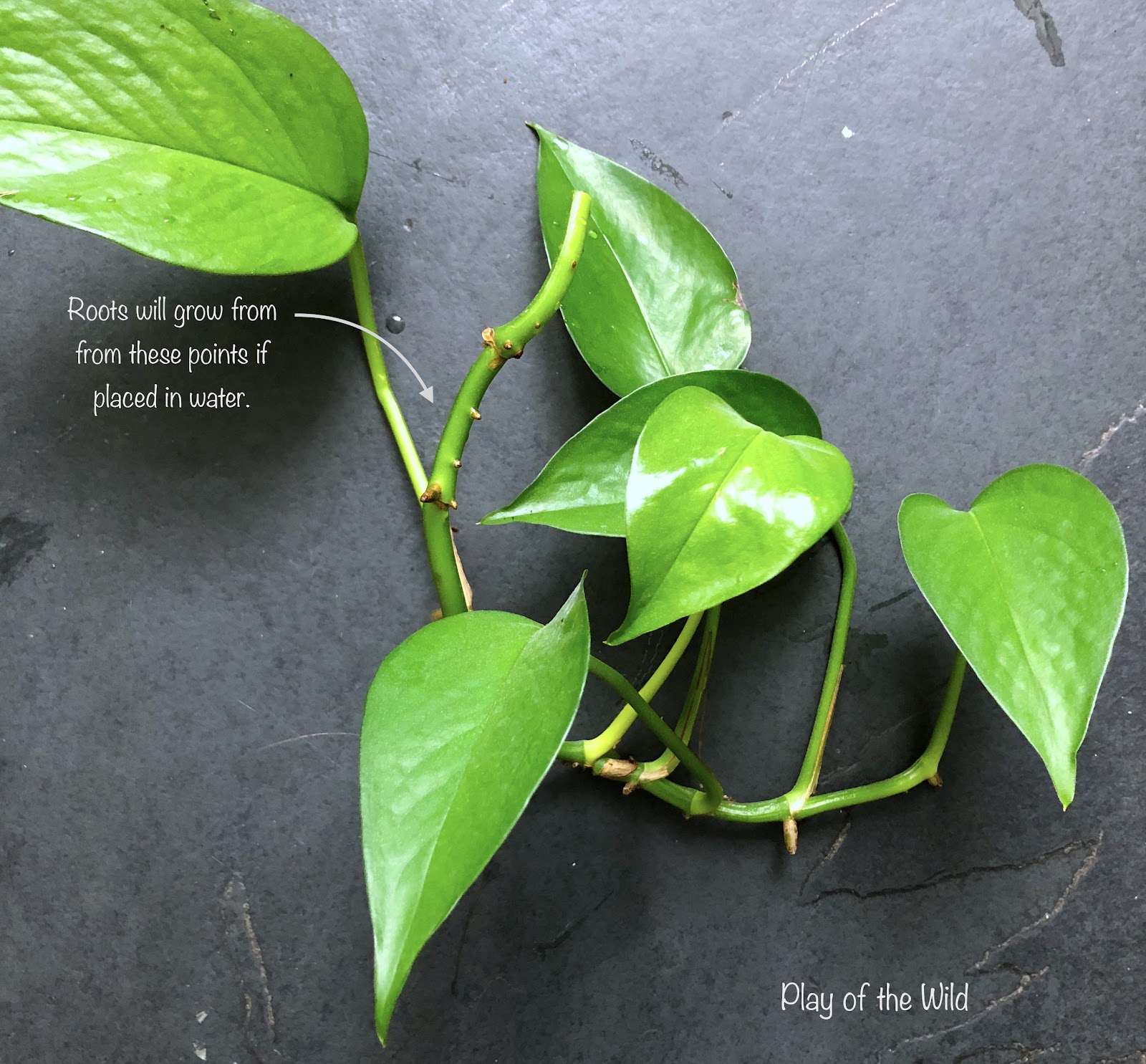
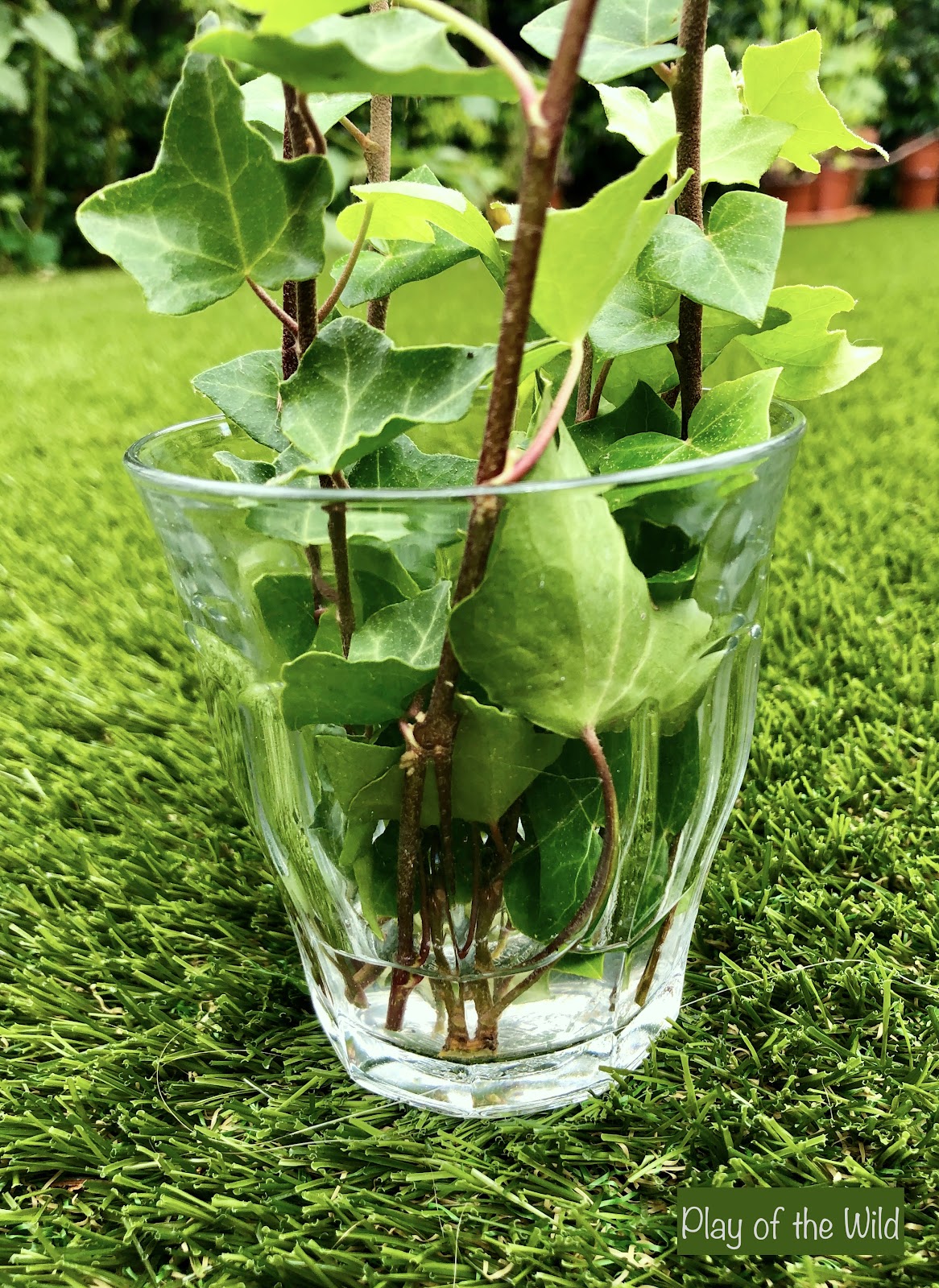
Benefits of outdoor autumn & winter garden activities for children
Gardening provides many benefits for both adults and children. Yuan-Yu found that hands-on gardening is particularly beneficial to children’s learning. Outdoor learning has been found to support learning in maths and science and the use of creative and critical thinking skills. Garden activities have also been found to promote children’s Zone of Proximal Development (ZPD) for learning. Working in the garden all year long also allows children to see how weather, plants and animals change through the seasons. Children can see first hand how plants grow and change.
Many gardening activities help develop gross and fine motor skills. Clearing up old plants, digging and raking leaves helps build muscles and gross motor skills. Activities such as cutting and sculpting seed bombs help in the develop of fine motor skills.
There is growing research to show that nature has positive effects on children’s mental health and wellbeing including measures of resilience, self-esteem, stress, and quality of life (related to health).
Outdoor Autumn & Winter Garden Activities
– Take it further
There are lots of great ways to get children into gardening. The activities above are great hands on ways to start the process. See my posts on growing seedsand bulbs. You should also see my propagating plants in water andSowing & Spreading Wild Flowers with Seed Bombs. Finally, you may also want to see my posts on making bird feeders using pinecones or How to Make a Bird Feeder without Peanut Butter (Suet Cake). Please let me know if you think of any more outdoor autumn and winter garden activities for children.
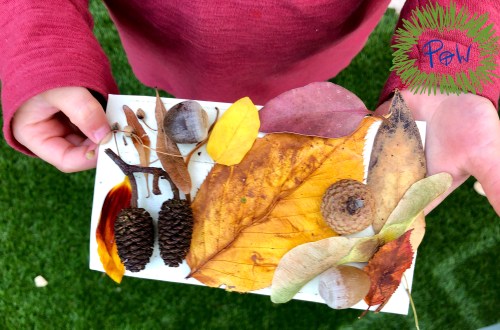
Outdoor Nature Art Activity- Miniature Nature Collages

Kids Vegetable Garden: How to Make a Garden for Kids
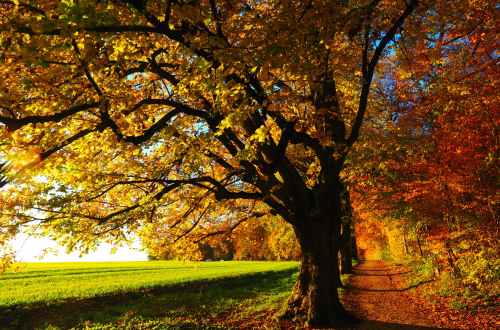
Autumn Themed Books for Preschoolers
Pinecone Birdfeeders for Outdoor Learning in Preschool
How to Make a Bird Feeder without Peanut Butter (Suet Cake)

